'Arch Stanton' on the Spread of Jewish Fantasies, Lies, and Corruptions
Most content unaltered © A Stanton 12 November 2016. Email arch-stanton (at) big-lies.com Notes Rae West 22 October 2016 v. 22 Oct 2018 17:25Contents
My Slow Realisation! ... There are two (or three) Jesus figures.
[1] Jesus as Disputing with 'Jewish' 'Religious' Leaders. This is the 'Jesus' which A Stanton explains in part. Mainly concerned with money claims (for example, on getting paid for dealing with dead human bodies). And for getting choice cuts of meat. And sex with prostitutes and children.
[2] The traditional 'Jesus' as an itinerant preacher, performing implausible miracles, and the supposed originator of ethical maxims.
[3] As my acute readers will note, there's another possible Jesus, concerned to demolish the entire Talmudic system, insofar as it may have existed. This goes further than [2], and since the Talmudic and related writings are largely obscure or secret, not part of the traditional Christian 'Jesus'.
I owe it to A Stanton for implicitly drawing this perhaps obvious distinction to my attention. - RW 22 Oct 2018
Notes - What's all this? [ Writing, Reading | Nickname | Lazarus | 'Jews' | Roman Empire | Christians & Catholics | Forgeries ]
By 'Arch Stanton'
Lies, Legends, Myths, and Fairy Tales of Jewish Storytellers
Reinterpretation of Lazarus
Tabernacle
Jesus - What a Guy!
Jesus' Teachings
Torah and the Old and New Testaments
Mass Starvation—a Standard Jewish Policy
[ Back to top of this page ]
What's All This? I became interested in the question: Why was the 'Old Testament' made part of the Bible? If, as is the current presentation of 'Jesus', a new ethical system is presented to the world by a touring orator, why bother with other material? After all, there are endless other points of view and writings which might be included! Trying to get a sharp answer led me to look into early Christianity, insofar as evidence exists. My piece on early Christianity is influenced by the behaviour of modern 'Jews', in particular their constant, continual, intentionally-directed, scripted lying, in for example the 'Holocaust' and 9/11 and mass invasions of white countries as sketched out by the half-Japanese Coudenhove-Kalergi. There are many rationalists who have argued against the existence of 'Jesus'. I don't know of anyone who has argued that the books selected as 'The Bible' were, simply, fiction, presumably written by 'Jews' wanting to invent or infiltrate a new religion.
Let me reiterate one aspect of the 'forgery' hypothesis which many people need some effort to understand. The 'forgery' view is that there was no Jesus; he was made up, in 'Jewish' film-script fashion, including sound-bites, superhero miracles, a simple storyline, multiple subplots, sex and violence, and all the rest. Early Christianity needed to have no connection with such a personage. 'Christian' meant something like 'anointed', 'golden', 'light', and may have been purely personal, or may have been political—perhaps to reform Rome or revive the Greek world. The early centuries of the new religion probably had no mention at all; the name 'Christianity' must have meant something else, in which case my comments would have been the everyday conversation of early believers, much as critics today ridicule the 'Holocaust' story, but if Holocaustianity becomes established, their words will no doubt be destroyed.
On the forgery hypothesis, 'Jews' of course have a motive for making their hero a 'Jew', and for including 'Jewish' material. This process must have been slow: the official view is that Saint Jerome inserted the Old Testament into the 'Vulgate' Bible, adding it to the New Testament. At this point, the issue of 'Jewish' writings comes into the picture. There is a lot to be said about the reality and otherwise of 'Jews', and ancient writings (and their destruction—a favourite occupation of 'Jews') but I will not say it here. I'm concentrating on official books, and their intersections with Christianity.
At this point, I noticed a comment (to the Occidental Observer, online) by 'Arch Stanton' on Lazarus. His view was that the usual interpretation of Lazarus is completely wrong. 'Jews' had a belief or policy or law of leaving a corpse for several days, to ensure it was genuinely dead. And they charged some money, quite a bit, for this service. Lazarus was protesting about this practice. Or something like that; 'Arch Stanton' has contributed a long story on the topic, after I contacted him, and offered to host samples of his work. His version of Lazarus (below) is unfortunately much, much longer than his original posting, and is written in a style heavily influenced by modern Jewish film and TV, popular Bible stories, mixed with English translations of the Bible, and in the historical romance genre rather than critical history.
I'd frankly hoped for something more sharp and condensed, but anyway here we have a presentation by a modern American (he told me Lutheran) on 'Jews' and 'Jesus'. But note the very important point that A Stanton never doubts that 'Jesus Christ' was an actual historical person. This of course is necessary for all Christians, as that religion has developed, and it carries with it the necessity to be entwined with 'Jews'.
Many critics of Judaism were or are Catholics—Luther in his early years, Russian Orthodox authors of the Protocols, Nesta Webster, Hilaire Belloc, Michael Hoffman—because Catholics have an unusually powerful motive to investigate Jews. But this has the equally powerful drawback of closing criticism at the point where investigation of Christianity itself is essential. Much of modern America is in this position, and in my opinion is seriously mentally damaged as a result. Their so-called 'skeptic' groups are Jewish-controlled fake opposition.
Writing, Reading were inventions which had effects still operating on human societies. It's important to grasp that societies with writing have possibilities completely out of the range of unliterate groups. And that the effects are determined to some extent by the brains of the populations—critical or credulous, quick or slow to learn, absorbent or indifferent. Example: opponents of the Khazar hypothesis don't seem to realise that a few centuries of imposition of fanaticism must affect the genetics of any group subject to it.
Nickname A Stanton (from a Clint Eastwood film) is in keeping with the US Jewish cultural references. But I have no idea who Arch Stanton is. His knowledge of Jews may in fact come from his background; perhaps he's yet another crypto-Jew?
Lazarus —below.
'Jews' 'Tabernacle' (below) emphasises blood, slaughter, and moneymaking by 'Jewish' priests. 'Torah and the Old and New Testaments' wrestles with the question of Christianity's intertwinings with the Torah, and modern American experiences with it.
Roman Empire and its fall. If the forged-by-'Jews' version of Christianity is true, we can see that the Middle Ages was a period in which Jew-related superstition triumphed over ancient empires. Fortunately, in my view, Christianity was never all-embracing in the way Judaism is, for its adherents, so there was space for technologies, laws, science, and arts to exist. It's not impossible that white countries and other regions (such as China) seen as threats by 'Jews' may fall, as the Roman Empire did, with secret allies of Jews becoming the equivalent of the Church authorities'. Writers have puzzled over the fact that early Christian interlopers did nothing to keep Rome together, in the face of ruin; but, of course, as with Freemasons and 'Common Purpose' 'graduates' and 'politically correct' news sources today, they allied with 'Jews'. We may face many centuries of repression worse than anything ion the mediaeval period.
Christians & Catholics Arch Stanton on 'Jewish Story Telling' includes material on the way attitudes probably genetic in 'Jews' emerge in stories and in deliberate confusion and lies. Some people think the Christian Bible is the only religious book to positively identify the Jew with the Torah as the enemy, and give instructions on how to defeat him. Some think Christianity was a Jewish revolt against their established religious tradition. Some consider the modern coining 'Judeo-Christian' is an accurate description of Christendom. Such is the ambiguity in the various books of the Bible, presumably deliberate.
Forgeries Forgery in Christianity (1930) lists forgeries, mostly based on Roman Catholic information (I think). Chapter 2, Hebrew Holy Forgeries is a start; Chapter 5 The Gospel Forgeries and Chapter 6 The Church Forgery Mill (includes the forged 'Donation of Constantine'). In an age with slow transport and control over books, and with not much in the way of general information, it is far easier to make things up than do serious research.
[ Back to top of this page ]
In time, I came to the realization that the vast majority the world’s problems emanate from Judaism’s hag, twisted religion and her two ugly spawns, Christianity and Islam. Were the world free of Judaism and these two spawns of hell, it would be free of the greater part of its problems. I think the best method to accomplish this is in the same manner Jews used in the past to defame white people like the founding fathers, i.e. by deconstructing all the myths and making them all too human.
The difference in my approach is that, as I deconstruct the myth surrounding Jesus, the truth becomes evident that his primary mission was to attack and destroy the second Temple’s arrogant Jewish priesthood and their corrupt sacrificial system. For this, Jesus had to have been a real character, as sources outside the Bible do in fact indicate. What separates Jesus from other self-proclaimed religious saviors of the day was his authority as a priest, a “card-carrying” authority of the Temple.
In the same manner Jews exculpate themselves from any responsibility for Hitler’s actions, they have likewise excluded themselves from their primary role in Jesus’ death. In both cases, Jews were the raison d’être for the existence of these great men who remain the two most hated figures in Jewish history.
Although I had been using the internet since the days of the BBS, in the early nineties I was still going to the library for much of my research. At the time, I was studying the ancient Egyptians. This naturally led to a reexamination of the early Christian myths. As GUI took hold and the internet became increasingly standardized, the ability to access information began to explode, making far more resources available at my fingertips. Over the years, the story slowly began to take shape.
The more research I did on the subject the more I discovered peculiar anomalies that provided rational explanations for the magical mystical myths of the Bible. These discoveries resulted from associated research on Jewish culture, history and religion. Perhaps the classic example of this is found in the story of water into wine. This is where Jesus pulls a fast one to prevent his preemptive exposure as a Temple priest. This status is indicated by his remark to his mother “it is not yet my time” the full adjunct to this admonition is: It is not yet my time to be exposed as having a priest’s authority. Note that just prior to this story, John had initiated Yeshu into the priesthood with his “baptism” at the Jordan. This was a Mikveh ceremony for the initiation of a priest. Jewish law in this matter states that there must be three priests to witness the initiation for it to be legal. Conveniently, three priests visit John at that very time to inquire about John’s “baptismal” ceremony.
The conundrum in the water into wine story is how to provide wine to the wedding party without a blessing, for doing so required sacrificial tribute (read tax) for the priest performing the blessing. As Yeshu would refuse payment for performing this act, it would expose him as a renegade priest. Note, he had to be a priest to provide the blessing in the first place. He solves the problem by cleverly having unblessed wine poured into ritually pure vessels (jars) intended for ritual cleansing, making the wine ritually pure without a blessing. The keys to the story’s true account comes in two parts. The first is where it is written, “but the servants knew.” Indeed, they did know how the trick was accomplished, for they were the ones who emptied and washed the jars before pouring unblessed wine into these vessels.
The second is where the steward proclaims the host saved the best wine for last. If one is ignorant about Jewish religious customs, then this part of the trick remains hidden. One must know the nature of the Jew to understand why a rich, Jewish merchant would circumvent the expensive blessing process for his best wine, while serving inferior wine to his guests. It is most likely the steward conspired with Yeshu to provide the same lower grade of wine, but the servants took the best wine to have a good laugh on their master who, knowing the Jew, was most likely a literal slave driver. Upon his public discovery, the steward has no choice but to join in on the joke. One can imagine the chagrin of the merchant when he discovered his best wine, hidden away for personal consumption, had been shanghaied by a renegade priest to supply wine to his thirsty wedding party.
So which version is more likely? The version where Jesus magically turns water into wine, or the version that can be fully explained within the physical parameters with which we all deal in our daily lives? More to the point, which is more likely when taken from the Jewish perspective?
As I began telling stories like this to Christians, invariably I would hear how Jews were largely irrelevant bit-players in these stories. The reason Christians give for this odd interpretation is that Jews rejected Jesus as their savior, relegating them to irrelevancy until the moment of the “rapture,” an invention of Cyrus Schofield in the mid 1800s. I was astounded to hear this as it is patently obvious that Jews are the center of the Bible narration. As I have oft written, The Bible is a book written “by Jews, for Jews, about Jews.” In fact, it is the goyim relegated to the role of irrelevant bit-players in the Bible.
It soon dawned on me the problem people have understanding the Bible stems from their abysmal ignorance of these ancient Jewish authors and the world they inhabited. Again, there is the classic story where Yeshu is tempted by Satan who tempts him with offers of all the delights of “the world.” Yet few outside the Jews, understand that, to first century Jews hearing this story, their world was Jerusalem, the location of their sacred Temple. This was the only world that ever held any significance to first century Jews.
Of course, this misunderstanding is just fine with Jews. Fundamentalist Christian supporters assist their cause by insisting the Bible is the inerrant word of god, written by god himself. According to them, the physical authors, who may have been Jewish, were nothing more than god’s personal transcription machines.
One must understand the fundamental nature of the Jew, his culture, religion and history before one can entertain the slightest inkling about the truth behind these stories. Of course, such knowledge unmasks the true Jew working diligently to obfuscate, deny and misdirect such discovery throughout the ages. If you want to see the shit hit the fan, wait until the Jews find people listening to this story. The reaction will undoubtedly be as violent as that experienced by those exposing the Jews’ sacred Hallowedhoax. Believe me when I say this is far worse as it exposes the lie Judaism truly represents to host populations both then and now. Of course, I will make no friends with Christians or Muslims either as attacking the myths of the Jews’ Bible attacks their myths as we well.
What follows is a further explanation of the problems created by the Jewish storyteller. I will send the remainder after I have fleshed them out with a few images.
The other day, as I again patiently typed yet another explanation of how Jesus was a Jew, how his story has been twisted into an epic Jewish myth to be accepted without question, I became overwhelmed. At that moment, I was overcome by how many times I have written these same thoughts in an effort to bring some form of truthful reality to these myths. Again and again, the same fetid thoughts ferment down into our culture as if leaking from a moldering cask of Verbosillado walled up in a Jewish cellar.
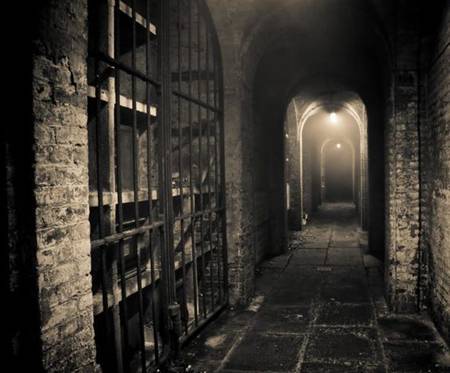
All at once, the full spectrum of Jewish lies overwhelmed my consciousness; I had this feeling that everything is connected. Suddenly I could see the whole thing. It was as if a perfect pattern was laid out in front of me. All the lies, all the myths that shape our lives, our history, our very world, I realized we’re all part of it – and we’re all trapped by it.
It’s dizzying how these lies legends, myths and fairy tales permeate one’s consciousness. They are embedded and hardwired into our culture at the expense of, not only our own ideas, but truth itself. The illusions have become pervasive to the point most people can no longer perceive even those truths they personally observe.
Thus, there are those who believe the Bible, but don’t believe the Holocaust and vice versa. There are those who reject the Gospels, yet believe rag-tag terrorists brought America low using boxcutters and jet airplanes they could not possibly control. There are those that accept the official version that buildings collapse perfectly into their own footprint from low intensity fires, but refuse to accept the existence of nuclear weapons. Here are a few thoughts for those buying into the storytellers’ newly hatched revision that nukes don’t exist.
There are those who believe demonic Nhadzees planned the extermination of the Jewish race. There are those who believe that Masons secretly run the world and that alien grays are warring for planet earth under an airport in Denver. There are those who believe the Bible was literally written by god and that earth is actually the center of the universe. There are those who believe man has been to the moon and those who don’t. There are those who believe Jesus actually raised the dead and will soon return to personally deliver them from their ultimate, hellish fate while others believe he was just the myth of Caesar.
There are those who believe in communism and those who believe in capitalism; those who believe in socialism and those who believe in “representative” democracy. There are those who believe Hitler was a Jew while others believe Jesus was not. There are those who believe one group of Jewish storytellers claiming Jesus was sent to save the world, while another group of Jewish storytellers emphatically claim he was nothing more than the bastard son of a Roman soldier. But what’s the difference when both versions emanate from a race of people incapable of telling the truth? Then there are those consumed simply by lust for pornography, sports or military adventurism.
One thing is certain, no matter what version one might choose to believe or disbelieve, no matter what vice one wants to sink into and no matter how low, their descent undoubtedly began with some form of myth or delusion written by a Jewish storyteller. In every case, our world has been turned upside down by these storytellers whose words slice away western culture like razor-sharp knives. Ours is the death of a thousand cuts.
The very foundations of our political, religious and economic beliefs are based on Jewish lies, legends, myths, and fairy tales. We swim through life submerged in a world of Jewish delusion. Like fish that cannot recognize the water surrounding them, we cannot recognize the sea of lies surrounding us. Whether it is an ancient scribe or an academic authority, whether crumbling religious text from the past or tomorrow’s newspaper, whether a comic book or national bestseller, a Hollywood movie, the nightly news or an NPR story, our world has been, and continues to be, profoundly shaped to our detriment by the Jewish storyteller. From the Bible, to the Holocaust, to the trade towers, reality is based on little more than verbal illusions created by a tiny group of dystopic psychopaths, like those tiny aliens in the Star Trek episode, Cat’s Paw

The storytellers have turned villains into heroes and heroes into villains. While the founding fathers and other great white men of western civilization have been, at best, relegated to the dust bin and at worst, objects of scorn and ridicule; the lowest form of society’s scum have been elevated to heights of honor.
Look who is admired and venerated today: Actors, once a class of people one wouldn’t want their daughter to marry, are now the focus of social glitter and adulation. Actors are a class we now admire from afar. Negroes and other third worlders, once considered quaint and primitive, a people to be guided and elevated from their primitive states, are now considered far more advanced in social skills and venerated for their sagely insight and great wisdom – too bad they never had enough wisdom and insight to invent the wheel.
Sports figures, once a gaggle of kids relegated to sand lots after school, are now multi million dollar super stars just literate enough to do commercials. Organized crime figures, once tracked down and exterminated like vermin, are now viewed as the lower pillars of society who just happen to be in that line of work. Spies, once shot on site as traitors and considered somewhere on the level of a flasher are now considered coolest of the cool. Corrupt businessmen indulging in criminal activities to advance their business, are now considered smart and savvy to be doing whatever it takes to get ahead. Politicians, once routinely tarred and feathered and run out of town on a rail, now openly spew their vindictive hatred upon the very people who run to the poles to elect them before turning around to give half-million dollar talks to special interest groups.
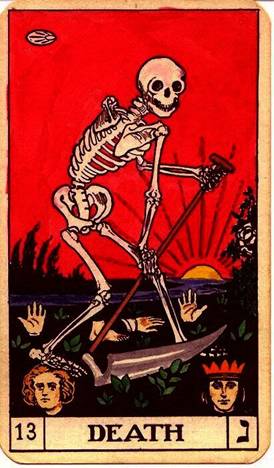
The fact is the entire bedrock of western culture has been plowed under and sown with foul seeds of vice and corruption. Those who produce the least make the most and those who produce at all are relocated offshore. It’s the era of the “Luftmench,” the airmen who, like ghouls, haunt the middle of every deal, doing nothing but sucking out their pints of profit. The greatest amount of profit today is created from the suffering of others.

Whether it’s doctors dispensing pills and exotic cures for dread diseases or lawyers running their mouths to create a more fair and just society, there’s big bucks in pain and torment. Of course, one can always bet against themselves with an insurance policy. But did you know the insurance companies run the medical profession; and the storytellers run them both? The fact is the people who make the most money are the people who run their mouths best, and wouldn’t you know it, that just happens to be the storyteller’s forte.

The question dangling over our heads like a demented sword of Damocles is why so many non-Jews want so desperately to join Jews in their delusions? Why do we want so desperately to believe the Jews’ world of lies and illusion? Jews are a race of neurotic, psychotic, murderously psychopathic, pathological liars hell-bent on our destruction. Why then do we strive so mightily to share their mental illness? What is it about the Jewish storyteller that draws us to our own destruction like moths to a flame?
American culture has long had its own myths and fairy tales, like Paul Bunyan and his blue ox Babe, Pecos Bill, (does anyone remember these American folklore characters?) Santa Claus, the Easter Bunny and the tooth fairy. The difference is that while the vast majority quit believing these childhood stories at a young age, the myths, lies and fairy tales spun by Jews become cemented into their consciousness as fact.

One of the defining features of the Jewish fairytale is the total lack of evidence for the story. Those performing hard research on Jewish “historical” accounts quickly discover a complete lack of supporting evidence for the claims being made. Jewish claims for the Bible, the Holocaust, the attack on Trade Towers, all suffer from a complete lack of documented hard evidence, along with a plethora of impossible, miraculous details like the parting of a sea, raising the dead, thousands gassed per hour for years on end and jets being vaporized on impact.
Perhaps the most telling details of a current storyteller’s myth are found in the crucial evidence presented by bandanas and passports that survive an aerial holocaust completely intact. “Oy Vey! A miracle itz!”, cries the Jewish storyteller and the goyim herds, mouths agape, nod stupidly in agreement. They never realize the Jews’ consuming penchant for such unbelievable lies, soon woven into cultural myths.
From Abram and Joseph’s extortion of Pharaoh, to geysers of blood spurting up from the ground; from Nhadzee brain bashing machines and multicolored smoke curling cruelly from bodies, to airplane crashes without bodies, impossible cell phone calls and building seven, what is lacking in all these Jewish fairy tales is any hard evidence anywhere, either now or then.

Take the Bible for example (you knew I would didn’t you?) The Bible is the paramount example of Jewish myths and legends. There is little if any factual evidence for any of the Torah stories outside the Bible. Yet countless hours have been spent attempting to validate these myths as fact. Here’s a fact the goyim fail to notice, the very word “Torah” means “law” “instruction.”
According to its title, the Torah consists of books of legal instruction describing obviously metaphorical, legal precedence that support a sacrificial system; this as opposed to a book of factual, historic events. The very name of this book describes its contents, yet it is invariably accepted as an historical account of not just Judaism, but the world! Were that the case, one would think the authors would have titled it something like “Histora of the Planeta.”
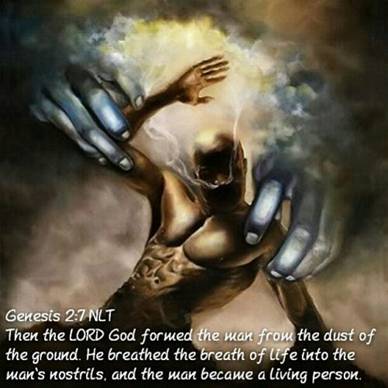
What is the rational person to think about stories like the creation of Adam, who begins life as a little mud doll formed by a parental god, in his own image no less, into which he breaths life? Considering the scale of the universe, one might think the image of god to be somewhat grander than an infinitesimally small, bipedal parasite foraging on a moldy, mustard seed molecule of a solar system in a tiny, far away, forgotten https://www.youtube.com/watch?v=GoW8Tf7hTGAgalaxy. Is it possible the storytellers made up their creation story? Me thinks they didn’t have a clue.
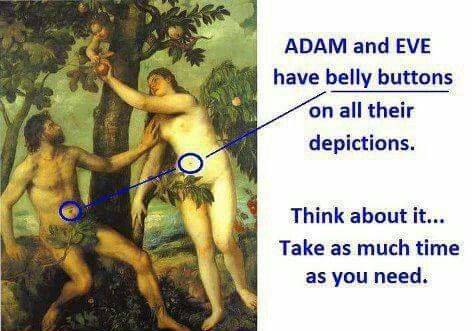
What about the Tower of Babel, Cain and Able, The sacrifice of Isaac, Abram the extortionist, Jacob the conniving thief and liar, Sodom and Gomorrah, The walls of Jericho? The key to understanding just how pervasive Jewish thought has become in this culture can be uncovered in the question, “How many of these stories do you know by heart versus other accounts of non-Jewish religious figures? How many Egyptian or Greek Gods can you name; how many of their stories can your recite by heart?” Perhaps a more crucial question might be; “Are any of these ancient gods linked to your modern day religious or cultural beliefs?”
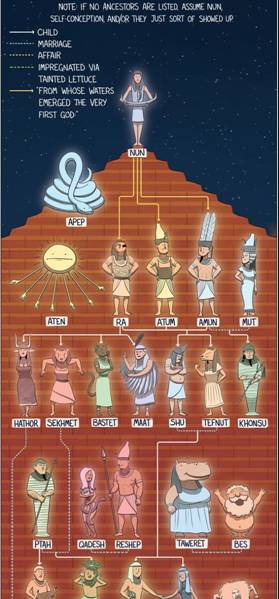
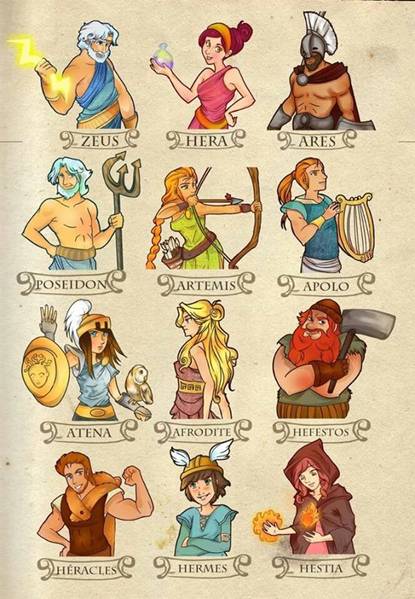
While such non-Jewish characters are now relegated to a place high on a dusty shelf, tucked far away in the back of some forgotten museum, thanks to the talents of the Jewish storyteller, the Bible is considered more relevant today then when it was written some 3000 to 3500 years ago.
But then, what of Darwin’s opposite theory of evolution, a story the storytellers have now embraced, expanded, stretched and twisted until it has replaced their own god as the traditional, factual, account of man’s creation. Was it a monkey or God that created man? This has become our divisive choice. How’s that again? The Jews set ‘em up and the Jews knock ‘em down?
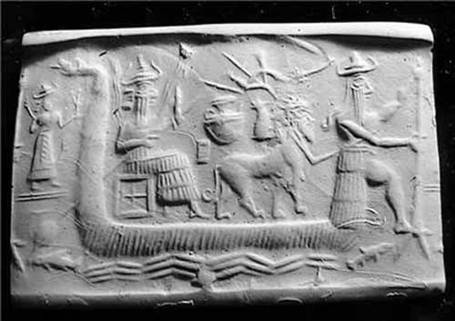
The Bible’s flood account is an obvious plagiarism of the Story of Gilgamesh written some five hundred years earlier. Many who have read the Gilgamesh account, as I have, clearly finds this is the case. What’s more, plagiarism and forgery, theft of ideas, objects and words, are respected cultural traits of the Jewish “Luftmench.”
Due to misinterpretation of the story, everyone assumes Noah’s Ark is a boat or ship-shaped vessel, yet the story says “ARK”, not “boat.” The only other ark mentioned in the Bible is the Ark of the Covenant, another mysteriously mythical object invented by Jews, and one that clearly has no relation to water.
Boats and ships are mentioned elsewhere in the Old Testament, so Jewish storytellers were clearly aware of such vessels. Why then is Noah’s vessel described as an “ark” and not a “boat” or “ship?” What do these two mysterious vessels have in common? According to the storytellers, these are where god’s most sacred objects are stored.
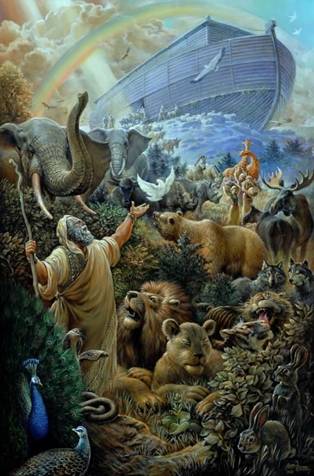
Noah’s ark contained seven of each of the acceptable sacrificial animals, along with God’s other lesser creations. These animals were closest to god’s (and the priesthood’s) heart, while the Ark of the Covenant ostensibly held the remnants of God’s commandments. Any rational individual studying the Jews will have strong suspicions the Ark of the Covenant contained something far more valuable than crumbling bits of sticks and stones and a rancid pot of Manna. Unlike Noah’s ark, this ark in all probability did exist. This will be explained further.
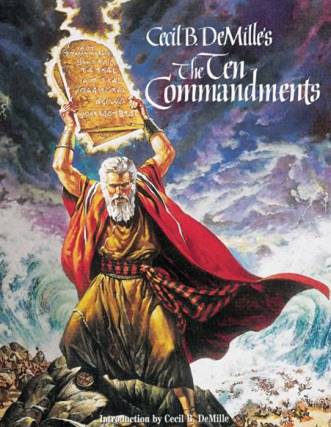
Most everyone knows the Exodus fable. The traditional Sunday school version is the Egyptians enslaved the Israelites forcing them to work in the slime pits building bricks for the pyramids until a savior named Moses delivered God’s chosen people from their bondage. And that’s how the storytellers’ movie portrays events. Yet, even the slightest examination of this children’s story reveals so many holes as to beggar even the slightest credibility.
First, unlike Jews, Egyptians did little in the way of practicing or promoting slavery. As a hard working, productive, self-sustaining culture, they had little need or use for slaves. By contrast, Jews were the consummate slavers of the ancient world, which is undoubtedly why the Bible story reads as it does. Second, the “Israelites” were a thousand years in the future when the pyramids were constructed around 2700 BC or perhaps earlier.
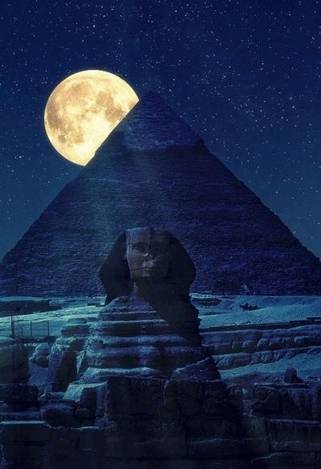
In fact, these massive stone (not adobe) structures, one of the seven wonders of the ancient world, are not even mentioned in the Bible, leading one to wonder if the storytellers ever actually visited Egypt. Yet, there is evidence that an “Exodus” did occur, but in a far different manner than Jewish storytellers would have us believe.
Various ancient Egyptian texts provide unmistakable evidence the original Jews were referred to by ancient Egyptians as “Hyksos.” The key to their true identity lies in the descriptions of these people. As Jesus said, “Ye shall know them by their fruits” and this story would be hard pressed to get any fruitier.
No one knows where the Hyksos came from, they just showed up and, major clue number one: wormed their way into the Nile’s delta region to divide the people, splitting the kingdom in half. Since their storyThe Tower of Babel , divide and conquer has been the Jews’ by-word for the destruction of host cultures.
Major clue number two: Egyptians referred to the Hyksos as “shepherd kings.” So how many times did we hear the “Israelites as shepherd” theme in Sunday school? In fact the lamb was the Temple’s primary sacrificial animal, as in the “Paschal lamb.”
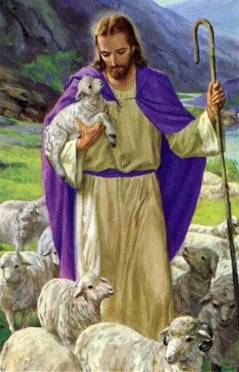
Major clue number three: Rabbinical Judaism calculates Moses’ lifespan as corresponding to the years 1391–1271 BC; Jerome speculates 1592 BC to be his birthdate, while James Ussher considers 1571 BC as his birth year. The Hyksos settled in the eastern Nile Delta, some time before 1650 BC. Seqenenre Tao, Kamose and Ahmose waged war against the Hyksos, expelling them from Egypt around 1550 BC. This is a rare and unusual example where the storyteller’s Biblical myth is relatively aligned with what are thought to be unrelated historical records.
Major clue number four: Around 300 BC, the Egyptian historian Manetho wrote how the Egyptians had to cut a deal with the Hyksos to get them to leave their lush, garden
paradise. After the Egyptians made their payoff, thousands of Hyksos left the delta and traveled west where they founded a city called, and here’s the 64 billion dollar clue - Jerusalem! Slice this with Occam’s razor:
“Tethmosis, son of Alisphragmuthosis, attempted to take the city by force and by siege with four hundred and eighty thousand men surrounding it. But he despaired of taking the place by siege, and concluded a treaty with them, that they should leave Egypt, and go, without any harm coming to them, wherever they wished. After the conclusion of the treaty they left with their families and chattels, not fewer than two hundred and forty thousand people, and crossed the desert into Syria. Fearing the Assyrians, who dominated over Asia at that time, they built a city in the country which we now call Judea. It was large enough to contain this great number of men and was called Jerusalem.” - Manetho. How many more smoking guns are required for proof?
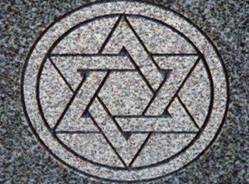
Those reading this may have read my previous accounts of how the interlocked triangles comprising the Star of David symbolize what Jews consider their first successful inversion and destruction of an advanced culture. The upright triangle represents the pyramid, classic symbol of ancient Egyptian culture, while the inverted triangle represents Moses inversion of that culture. The interlocking represents how the Hyksos/Jews intertwined themselves with the culture to a point where the two cultures were inextricably linked. Dr. Jan Assmann refers to this process as “normative inversion” and describes this process in his book Moses the Egyptian .
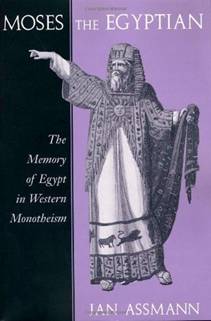
Surely, most are aware of the list of the 109 countries from which Jews have been expelled. Yet how many list Egypt at the top where it belongs? That would make the list stand at 110.
Let’s review. The Hyksos worm their way into Egypt and take over half the kingdom though subversion. They then divide the nation and its people. They are a pernicious people that for generations, irritate the Egyptians to no end. Finally an Egyptian king successfully mounts a military campaign, but the Hyksos flee to their capital city of Avaris, where they barricade themselves in. (No joke, the name of the Hyksos capital is Avaris, how’s that for a poetic irony?) When the Egyptians find they cannot dislodge the Hyksos from Avaris, they send in an emissary to buy them off. Doesn’t this sound like the standard Jewish theme for host cultures played out some 109 times across history? Can we accurately identify these ancient Hyksos as the progenitor of the modern Jew, by their rotten “fruits”?
Let us now return to the Biblical version for a moment with a verse from Exodus “But every woman shall borrow of her neighbour, and of her that sojourneth in her house, jewels of silver, and jewels of gold, and raiment: and ye shall put them upon your sons, and upon your daughters; and ye shall spoil the Egyptians.”
“Borrow” the gold, silver and jewels? Spoil the Egyptians? Sounds like the same payoff as the Egyptian version of the Hyksos doesn’t it? That story has “Jew” written all over it, yet the storytellers emphatically deny any connection to these people, as doing so might reveal them as something other than poor oppressed, victims, enslaved by an evil race of anti-Semites. Here is a more in depth explanation of the Hyksos
(Note: in the above link, the storytellers have already begun subtly remoulding the original story, sowing confusion to cloud their identity and culpability with claims like: “the Greek term, Hyksos has been incorrectly translated as “shepherd-kings.”)
Another emerging popular theme, is all the “good” things, the “Tikkun Olam,” brought to the peaceful Egyptians by the Hyksos. Marvelous new inventions to kill enemies, like horses, chariots, the composite bow, improved battle axes, advanced fortification techniques and nuclear weapons. (Scratch that last example, nuclear weapons were an “improvement” storytellers brought to western civilization.) In any event, the storytellers never fail to cover all the bases, whether good, bad or indifferent.
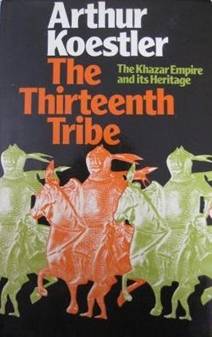
All the way back to the Jews’ nursery school days of the Israelites, Ashkenazi Jews mirror the same exact racial traits as their ancient tribal brethren in much the same manner as those ganged, puppet https://www.youtube.com/watch?v=H-y-J8GeYKkdancers. Then again, does it even matter when modern Ashkenazi Jews are destroying western culture in virtually the same manner as their ancient ancestors destroyed Egypt? Why this absurd attempt by the storytellers to distance themselves from their ancient ancestors?
What is to be gained by this new deception? Once again, it clouds and obfuscates observable reality. Like those alien grays and evil Nhadzees taking over the planet from their arctic bases, the myth of the “thirteenth tribe” misdirects a certain segment of the public, putting them at odds with those who have learned otherwise.
In this instance, known reality is that, from the Exodus to the Holocaust, it’s all (((Jewish))) “history.” The storyteller’s myth is designed to divide and conquer by confusion. As more and more people awaken to the storytellers’ lies, they are beginning to examine the Biblical horror stories in a much different light. Since there is no denying the horrors of the Bible, the next best thing is to deny any connections to them.
So the question put forth by the storytellers is not, are Jews a unified race to be held accountable for their historical crimes, but one of fractured identity of the Ashkenazi. If they are not Jews, then what are they? With this new version, think about how much Jewish history can be questioned, if not denied. If the Ashkenazi are not be related to the biblical Jews, then they certainly cannot be the people held responsible for murdering Jesus - can they?
Everywhere one looks, they find the storytellers continually altering history, changing reality; endlessly dizzying the gullible goyim with the admonishment: Look over here! No! Look over there! No! No! It’s over here! No, it’s over there! You’re wrong, look again, it’s really not here at all! Round and round and round we go, where and when we fall, no one knows.
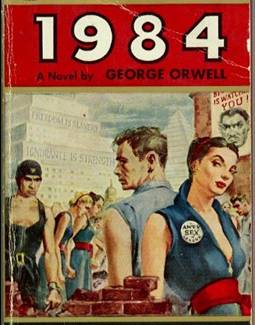
Let’s take another look at what Eric Blair said about this penchant for historical revisionism - “Those who control the present, control the past and those who control the past control the future.” Obviously, the storytellers control the present, that is why white Americans have a third-world, golden Negro despot for their president. So then, if the storytellers are not attempting to control the past, why are they constantly making these historical revisions?
The Hyksos left paradise with a large payoff of gold and silver, obviously in need of a secure way to transport all their booty, west to Jerusalem. This brings us to the Ark of the Covenant. Rumor has it the Ark of the Covenant was supposed to carry God’s commandments. It’s construction allegedly followed a design pattern given to Moses by God while the Israelites were encamped at the foot of Mount Sinai.
This was party time for the newly freed Israelites, who could now ride the bus unmolested, but instead of breaking out the good stuff and having a pole dancer entertain them, they decide to spend a bit of time fashioning a golden calf so they could bow down and worship it. My how times have changed – haven’t they?
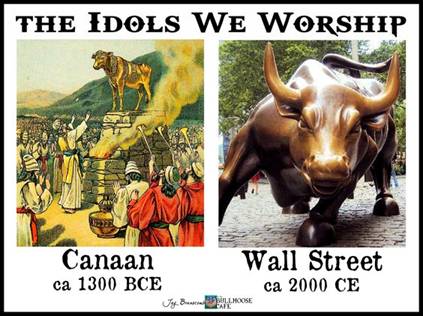
Of course in the storyteller’s usual maudlin, aggrandizing way of claiming great, and ever so ‘umble, fealty to their Lord God YHVH, this grand box supposedly served as a receptacle for the two tablets of the Decalogue, a pot of manna and Aaron’s rod. But what happened to the payoff - all that gold the Jew/Hyksos “borrowed” from the Egyptians as they departed into the desert for parts unknown?
The Book of Exodus gives detailed instructions on how the Ark was to be constructed. ‘It is to be gilded entirely with gold , and a crown of gold is to be put around it. Four rings of gold are to be attached to its four corners, two on each side—and through these rings staves of shittim-wood overlaid with gold for carrying the Ark are to be inserted; and these are not to be removed. A golden lid is to be covered with two (count ‘em 2!) golden cherubim, and placed above the Ark.’”

“Shittim-wood” I love it, it’z zo Chooish! Let’s see now, gold, gold, gold, gold, gold, and golden, all to house those most precious family heirlooms, sticks, stones and a pot of rancid manna. Hard to believe Jews were ever this sentimental – really – hard – to - believe.
So this Ark supposedly served as a receptacle for the two stone tablets of the Decalogue, a pot of manna and Aaron’s rod. But what happened to all that gold and silver Jews “borrowed” from the Egyptians as they skedaddled out of Dodge Paradise for parts unknown? What happened to the golden calf that so greatly urinated Moses? Are we to believe that, of all people, (((JEWS!!!))) would be expected to leave that golden treasure behind in the desert?
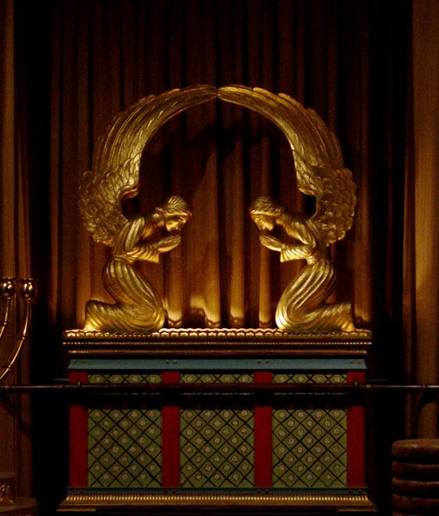
Wait a minute, what if they builded a flashy, sacred box in which to store the gold? And heck, while they’re at it, why not smear some bling on the outside just to make sure everyone knows it’z kosher?
Here is yet another clue about this box. Rumor again has it that the army that carries the ark before it is assured of victory. So what might this mysterious power be that assures military victory? Come on now, is it really that difficult to understand what power has always driven armies to victory, with or without a box of bling marching at the fore?
Why not look at the America’s “defense” spending for a clue? And remember how the Soviets drove themselves under trying to keep up with America’s military spending? I’ll bet they could have used the chosen one’s sacred box of bling marching in front of their army, ya think?
Weigh the evidence carefully before passing judgment. Considering the Jews’ historical attitude towards gold, which objects are Jews more likely to lug across a vast expanse of hot, dry, desert for forty years; sticks and stones or a golden calf-in-the-box? I can almost hear the Israelites whining to Moses: “Sticks and stones will break our bones, but gold will make us wealthy.” This is also why, when Pompey got there, the cupboard was bare. No doubt a little Jewish bird flew to the kohein gadol’s (high priest) ear to let him know beforehand. Big Duh! there.
Given its actual contents, is it any wonder that anyone encountering the ark suffers instant death, or worse, becomes smitten with hemorrhoids or plagues of mice? (Check the box of your preference) Now isn’t that just special?
Hemorrhoids and plagues of mice are bizarre retributions the storytellers mete out to the Philistines after they capture the sacred bling box. Considering the source, I can understand hemorrhoids, but plagues of mice? Hey guys! I think it’z time to go back to the scripting room for some revisions. Common now, Freddy Kruger? Jason? Pinhead? Hannibal Lecter? Surely you can do better than mice and hemorrhoids.
Next we quote Peter Leithart who writes: “The ark brings about plagues, humbles the gods of the Philistines and returns full of treasure .” Full – of – Treasure! How much more obvious can it get? The Ark is all about go(l)d isn’t it? That’s G-O-D spelled with an “L”.
However, (I’ve saved the best for last), in order to end their plagues, Philistine diviners advise the people to make “a guilt offering of five gold mice and five golden tumors.” (Remember this is the storyteller’s version as opposed to a Philistine story) Thus, in this description, we find one of those peculiar traits of the chosen ones where they point to a symbolic representation of what they really are and what they represent to the Philistine, i.e. a race of vermin that bring virulent cancers to their host culture. And there’s that lust for gold again.

How many people have gone in search of these Arks? How many have claimed to have actually discovered Noah’s mythical ark? And what did these intrepid vindicators of Bible lore discover when they went in search of that ark? What else - the very large boat they expected to find. I’m thinking that in the fevered mind of the storyteller, Noah’s ark was just an enlarged version of that other box.
These are but small examples of the storyteller’s talent from their Old Testament, Now let’s examine the storyteller’s New Testament. Here is a Jewish story with a proven historical basis. Jesus, the story’s main character, has been mentioned by recognized historical figures outside the Bible. Yet, this story has once again been turned upside down and mythologized by Jews into another one of their highly imaginative fairy tales both for and against Jesus.

Incredibly, the current popular story is that the entire Gospel story is a myth. Jesus never actually existed; he was at best, nothing more than an amalgamation of other historical characters. So we are supposed to believe Jews have maintained a virulent hatred for a mythical character that was nothing more than a figment of goyim imagination, an amalgamation of various other characters?
Hate the story, perhaps; but two thousand years of Jewish hatred for The man who never was?! What are the chances, what – are - the – chances of Jews being this gullible? And here’s a good one, the final line from the linked review reads – “In moviemaking, if not in war, myth always trumps history.” How true.
There is ample historical evidence outside the Bible for the time, location and larger events mentioned in the Gospel narrative, yet naysayers lament if Jesus had performed such profound miracles like raising the dead, why aren’t these mentioned in other historical accounts? Perhaps it’s because these “miracles” are actually acts of legal insurrection, unintended outcome to Jewish temple law, that were of no consequence or interest to others of that time and place. Wouldn’t that make sense? Wouldn’t that concept fit perfectly in the world we all know and live in?
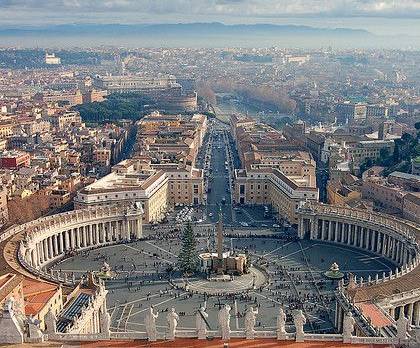
How much religious minutiae, of great interest to its followers, pass unnoticed by the much larger population of non-believers? Vatican II had a huge impact on Catholics, yet how many other Christian sects, never mind the secular masses, felt profoundly affected by the Catholic church’s seismic shift in dogma? How many politically focused pundits stopped to expound upon Vatican II? Where is Vatican II in our history books, outside of perhaps a footnote? How many can name the pope(s)-in-charge during Vatican II?
By this example, one can clearly see why the Romans and others would have taken no interest in what to them, was just another Jewish religious insurrectionist. To the first century Romans, Jesus was a completely insignificant character in their cultural history.
Of course, when Jewish storytellers wove the story into another fabulous mystical religious myth of miraculous intrigue, the once minor historical figure assumed monumental proportions of a scale that would, from that point forward, lead to unimaginable death and destruction across the face of the planet. From Constantine on, many warring armies would march across history carrying shields emblazoned with the sign of the cross while singing Onward Christian Soldiers.

Thus, within the Gospels, one finds an actual historical account for which there is at least tenuous evidence. So what happens to this mundane account of a religious insurrection? Jews turn it into yet another monstrous myth! Here we find the Jewish storytellers turning reality into myth in much the same manner as they turn myth into reality.
A final note on Jesus. From my own study, I find Jesus to be an enlightened sage and great teacher. A sage who presented the same truths to first century Jews that Buddah had introduced to Asians further east some 500 years earlier. However, Jesus was a Jew who had come first and foremost, to address Jewish religious issues concerning their corrupt Temple and its bloody sacrificial system physically and spiritually impoverishing Temple followers.
While his message contains timeless elements of truth that have echoed across the ages from all great teachers and sages, it was specifically tailored for Jews of the first century. His mission was never intended to be carried beyond that time and place. It was the storytellers that carried it forward to serve their own greedy purposes.
That it why his name, title and message became twisted and misshapened into a travesty of hate and vengeance that led to countless deaths and massive destruction for two thousand years and continues on to this day. Jesus would have been appalled. Had he seen the future outcome of his regional efforts there can be no doubt he would never have uttered a single word.

Now for a final, telling example of the storyteller’s chutzpa in changing history - the Thracians
Thracian graves and tombstones often have the name Rufus, meaning “redhead”, inscribed on them, – a common name given to Thracians. Ancient Greek artworks often depict Thracians as redheads. Rhesus of Thrace, a mythological Thracian King, is so named because of his red hair and is depicted on Greek pottery as having red hair and beard. Ancient Greek writers also described the Thracians as having red hair. A fragment by the Greek poet Xenophanes describes the Thracians as blue-eyed and red haired:
“...Men make gods in their own image; those of the Ethiopians are black and snub-nosed, those of the Thracians have blue eyes and red hair.”
Bacchylides described Theseus as wearing a hat with red hair, which classicists believe was Thracian in origin. Other ancient writers who described the hair of the Thracians as red include Hecataeus of Miletus, Galen, Clement of Alexandria, and Julius Firmicus Maternus.
Do you think Thracians might have had red hair? Would you feel the evidence provided by ancient references, made by people who were there, might make that a pretty fair certainty?
Nevertheless . . . ‘According to Dr. Beth Cohen, Thracians had "the same dark hair and facial features as the Ancient Greeks."’ So are we to accept the idea those ancient references are wrong, debunked by a single Jewish doctor of god knows what?
Question: Given the preponderance of evidence to the contrary, what might her rational be for such a contradictory statement? Could it be another small cut by the storytellers to obliterate the special physical features of the white race?
Remember how the name Hyksos, originally translated as “shepherd kings”, is now claimed to be a mistranslation? That was another small cut to change history. The storytellers never rest in their effort to redefine and obscure every jot and tittle of historical truth, replacing it with fevered fantasy.
Why then do we want so desperately to believe in these myths created by Jews? What is it that drives us to believe those pretty Jewish lies that use words like: “democracy,” “from each according to his ability, to each according to his needs” or “liberty, equality, fraternity” or “diversity is our strength” when personal observation has revealed time and again, these lofty platitudes actually bring about the very opposite of their meaning?
Why is it we largely ignore the million of lives lost in two fratricidal, global wars? Why is it we scrupulously avoid any mention of the Jewish communist’s murder of sixty-six million people, their grisly Holodomor genocide by starvation, the even larger atrocities of Mao and his communist regime, the Allies’ intentional slaughter of a million and a half German POWs, the Katyn forest massacre, the genocide of the Palestinians and countless other, well documented, atrocities?
How is it we turn a blind eye to these well documented historic horrors, rushing blithely past to embrace hideous, pornographic mythical holocaust scenes of an impossible number of victims only a viciously crazed Jewish scriptwriter could invent? Impossible portrayals of vicarious suffering ranging from countless movies and TeeVee shows to museums and memorials we pay for!?

A primary trait of such Jewish myths is the “monolithic” nature of non-Jewish cultures. As Barbra Spectre’s example infamously pointed out, to this day, Jews harbor a great, ancient fear and hatred of “monolithic” or homogeneous cultures. Even the earliest Biblical story of civilization involves the threat of Nimrod’s racially homogeneous people, to wit: “And the Lord said, Behold, the people is one, and they have all one language; and this they begin to do: and now nothing will be restrained from them, which they have imagined to do. They are all one people.”
So what does one find in the Nhadzee myth? A monolithic nation of hateful demons among whom, as in the myth of Sodom and Gomorrah, there is not one “righteous or just” individual worth saving.
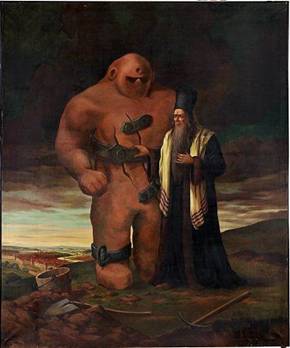
It is interesting to note traditional Jewish portrayals of Nhadzees mirror the Jew’s own golem myth as unthinking, robotic, monsters that unquestioningly do the bidding of their mystical master, der Führer. The only difference in these stories is that the golem served the Jews, whereas the Nhadzees served the Germans – at least until the Jews mythologized and demonized them into greater service to the Jewish cause. Talk about a hive-minded monolithic race; termites have more diversity in their nests than Jews.
According to their claims, Jews were victims of a German genocidal campaign. Yet when they commit a genocidal atrocity against the indigenous Palestinians, they are still victims? Vat!? Why is it so many unquestionably accept Jewish claims of a German genocidal attempt against their entire race, when no hard evidence can be produced, when the very discussion of the subject has been made legally verboten?
Yet, these same slavish followers of the sacred holocaust ignore, justify or even deny the more-than-hard documented case of the Jews’ genocidal campaign against the Palestinians? It’s Jewish storytellers that accomplish these wonders of disbelief.
Let’s look at just a few of the Jewish cultural myths. How many can be validated outside the Jewish storytellers’ version?
Passover?
Masada?
Esther?
Joseph?
Moses?
The Exodus? (See above)
The Holocaust?
Samson?
Solomon or his temple?
David?
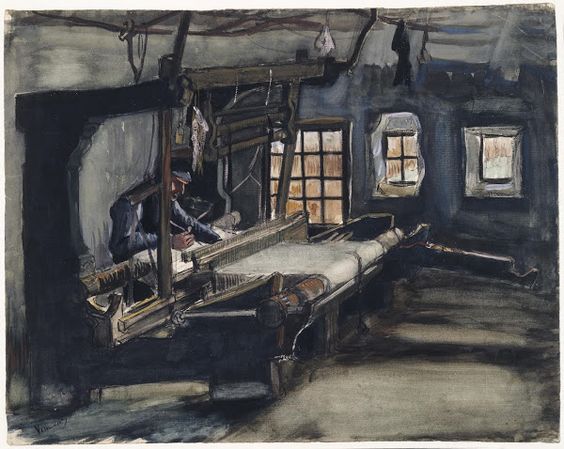
Virtually the entire fabric of Jewish culture is woven from the gossamer threads of such myths and legends. Is it any wonder they cannot fathom, let alone sustain, any truth with which they are faced? Jews wouldn’t know the truth if it hit them in the face like a bloody-wet, menstrual rag and they certainly do not enjoy hearing it anywhere nearly as much as that hole in the sheet.
The lies, legends, myths and fairy tales, and those questions arising from them, are simply too large to list. They are so voluminous, so intertwined with our thoughts and what we choose to believe is reality, the vast majority of our people can no longer separate fact from fiction, fantasy from reality. Theirs is a matrix of total confusion. Red pill? Blue pill? It doesn’t matter, it’s an allusion, within an illusion, inside a delusion. The effect is so pervasive, so encompassing, we can no longer stand apart from it or disentangle it from our collective soul.
Was there really a space race to the moon, or were people just being manipulated to reinforce the rapidly waning support for cold war military spending that furthered weapons technology development? Remember those wonderful gifts the Hyksos brought to the peaceful Egyptians?
Who most likely had not only the means, but the chutzpa, to murder a sitting American president?
A. A crazed lone gunman who did it for communism?
B. A two-bit organized crime boss?
C. The ruler of a third world Caribbean nation?
or - D. An entire nation of psychopathic thieves, with gigantically disproportionate representation in American government, who felt their financial and nuclear power being threatened?
Go ahead, take Occam’s machete and thrash away at an answer until you figure it out. Note the common Jewish storytelling technique used here, referred to in legal terms as, “leading the gullible, stupid witnesses to a conclusion.” But then, Jews do so love manipulating the law, almost as much as they love storytelling; after all, it means they can run their mouths.
What might happen if the heavy veil of Jewish lies, legends, myths and fairy tales were suddenly lifted from our minds? What would the world look like without Jewish storytellers spinning their web of delusional myths to veil known reality with fantastic illusion? Would we even be able to cope with the remaining truth? Obviously, the jews don’t think so because a Jewish storyteller, Rob Reiner, has a movie character spew forth the following telling lines:

Kaffee: I think I'm entitled!
Jessup: You want answers?!
Kaffee: I want the truth!
Jessup: You can't handle the truth! Son, we live in a world that has walls, and those walls have to be guarded by men with guns. Who's gonna do it? You? You, Lieutenant Weinberg?
This is clearly a Hollywood portrayal of an imagined Jewish belief painted as reality. This is an all too typical, in-your-face-fuck-you-goyim statement being made by a Jewish storyteller. What’s more, this movie was widely acclaimed by its goyim audience.
In this epic scene, one finds a psychopathic character screaming how white men can’t handle the truth. Note the withering attack on Lieutenant Weinberg, a character that has no other place in the scene then to serve as an anti-Semite’s whipping boy, just so the audience knows for sure the psychopath “Jessup” isn’t Chooish.
In truth, this scene exhibits a primary Jewish cultural trait, that of projecting the Jewish mentality on a goyim character. It’s not the goyim who are unable to “handle the truth”, it’s the fantasizing Jew that is unable to cope with the truth. For proof of this, just try opening up a debate on the Holocaust.
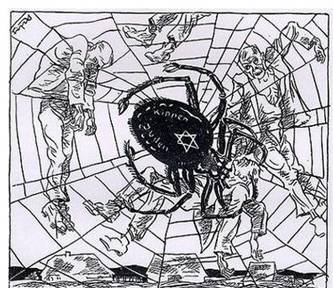
Yet we must face our own truth, is this fictional character plausibly correct in his observation that white men cannot handle the truth? From the evidence presented by the white races’ mindless rush to embrace Jewish lies, legends, myths and fairy tales, this Jewish storyteller is actually stating what the storytellers have long known – we won’t recognize, let alone believe, the truth when they spin their web of lies around our minds.
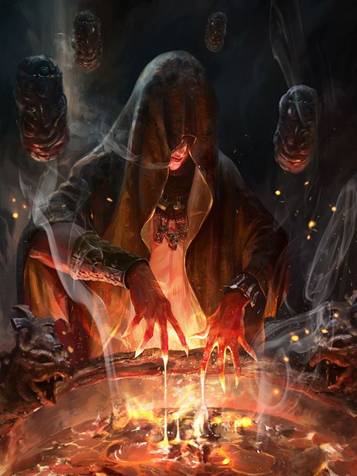
These wicked witches and wizards of Wordsmithy mutter foul incantations while crouching over their bubbling cauldrons of verbiage. Their teeth drip red with the blood of Palestinian children as they stir in nasty expletives while croaking, “we think it’s worth it!” Demon Shabbat goy and zombie social warriors grovel at their feet, supplying ever more ingredients that feed a vicious vichyssoise of verbosity.
Eye of guilt, heart of hate, white genocide will be your fate!
Lump of lies, sweet words and myths, error from tongue of vulture,
A flask of horror with shot of terror, will wreck the white man’s culture.
Small twist of humor to top it off, so they won’t know we kill them soft.
We spit in their face, we lie in their ear,
We smother their world with blankets of fear.
Holocausts and trade towers to make them flinch,
We’ve stolen their Christmas with our Grinch.
Monsanto brings fruit from our vines
With genes we’ve spliced like Frankenstein
This horror food we sell to you
Is gobbled down without a clue
Promised health, medical incantation
It’s a death of stealth by vaccination
Laced with mercury that is so hot
These kill and maim like bullets shot
They cannot see with their own eye
Clear evidence that we deny
Those trails of death that cross the sky
We drive the Goyim to despair,
For this, a lie we quote,
“You have a voice in de-moc-rac-y”,
“You have the right to vote!”
Stolen houses from widows, Wall Street deals from hell,
We fatten our coffers with these sweet words: buy! Buy! BUY! No - sell!
Stealing from the goyim is like taking a grizzly bear’s honey,
Be careful, make sure they’re fast asleep, before you debase their money.
These things from our bag of tricks we play,
So to the goyim this we say,
A stake to the heart is our only fear,
But we’ve stolen your soul so killing us will cost you dear!
Confronting the issue of the dead body
By the time of the Mikdash, the priesthood’s laws had morphed into a byzantine legal structure argued endlessly over by the kohanim, rabbis, P’rushim and various other authorities. Life under Mikdash law had become an endless string of thou shalts and thou shalt nots governing almost every conceivable detail of a Jew’s life. One could never tell when they had sinned, for while one kohein or P’rushim would say they had, others would argue the counterpoint. The Essene sages had taught Yeshu to master such legal arguments and wrangling. As with the P’rushim who had challenged him with payment to Caesar, more than once he had rebuked them with brilliant counter point. Now he had begun to use his powers as a kohein to challenge Mikdash authority.
Originally, the law of coming into contact with a dead body, described as “the most unclean thing of all“, was developed to protect the blood marking of the ritual sacrifice. The idea was to eliminate contact with any blood source that might be used to counterfeit the sacrificial blood marking. However, by the time of the second Mikdash, the law had become little more than a scheme to fill its coffers. Even so, a special causeway had been constructed to connect the Mikdash mount to the Mount of Olives to prevent kohanim from coming into contact with a grave.
The result of this proscription was a “Chukat“ or suprarational decree; a law without logical explanation. The Chukat Para Aduma, described in the book of Numbers, is the ritual purification of the individual who had contacted a dead body, a process involving the sacrifice of an unblemished red calf along with a piece of cedar wood, a bundle of hyssop and a scarlet thread. The ashes of these elements were mixed in water and sprinkled upon the defiled person or object. The kohein performing the ritual then becomes ritually unclean, and therefore had to bathe himself and his clothes in a ritual Mikveh and was deemed impure until evening. The laws concerning this sacrifice are notoriously difficult to comprehend. Sometimes the process rendered the individual pure while at other times rendered them impure.
A gentile idolater once said to a Rebbe, “These acts which you do appear like sorcery! You bring a heifer, burn it, crush it, and mix its ashes with sticks and thread and if one of you is impure from a corpse, you sprinkle two or three drops of the concoction upon him and tell him he is pure!“
The Rebbe explained this in the following manner, “While there are many commandments that appeal directly to our sense of logic, and still others that after having been commanded make sense to us, there are other laws that entirely defy human understanding. Such a law is this curious procedure for purification from contact with a corpse. To eliminate death we need to eliminate evil, which is accomplished through cutting off its original power supply. The spiritual origins of the red heifer is connected to the last stage of divine transmission before it descends into the realms of evil to give them life. Through this amazing process of burning the red heifer, we assure that the flow of YHVH’s energy remains channeled toward holiness. Evil’s power supply is then permanently halted and the evil itself is fully eliminated.“
The existence of a red heifer conforming to the rigid requirements imposed by halakha is a biological rarity. The law states the animal must be entirely of one color and stipulates a series of tests to ensure the animal’s status. For instance, the cow’s hair must be absolutely straight, this to ensure the animal had not been previously yoked.
According to Jewish tradition, only nine Red Heifers were slaughtered between the time of Moshe to the completion of the Second Mikdash. A later Parah recounts eight of these. Moses prepared the first, Ezra the second, Simon the Just and Y’ochanan, the kohein gadol, prepared two each, and Elioenai ben HaQayaph and Hanameel the Egyptian prepared one each.
The absolute rarity of the animal, combined with the detailed ritual in which it is used, gave the red heifer special status among Hebrew traditions. It is cited as the prime example of a khok, or biblical law for which there is no apparent logic, and is therefore deemed of absolute divine origin.
According to tradition, the ceremony took place on the Mount of Olives. A ritually pure kohein slaughtered the heifer, and sprinkled its blood in the direction of the Mikdash seven times. The Red Heifer was then burnt on a pyre, together with crimson dyed wool, hyssop, and cedar wood.
Obtaining such an animal was impossible outside the Mikdash, for only a kohein could declare the animal ritually pure. Thus, one had to buy the ashes of the animal from the Mikdash. However, since only nine of these animals had been sanctified since the time of Moses, only the ashes from a previous sacrifice were available. When one purchased the ashes from a kohein, they simply had to trust that these were actually the ashes from one of these animals. Herein lay tremendous hypocritical chutzpa. While the original law of contacting a dead body was implemented to prevent the counterfeiting of the blood mark, the sacrificial ashes used to ritually purify one who broke the law could easily be counterfeited! This assured an endless supply of sacred ashes to the Mikdash kohanim.
The rarity of the animal, combined with the complexity of the ceremony related to a proportional increase in expense, therefore one can guess what this ceremony cost a Jew at the time of Yeshu. Obviously, tight control over the system taxed the means of even wealthy Jews. It is telling that Yeshu’s first resurrection was the daughter of a wealthy Mikdash official who feared the cost of the purification ceremony. Thus, even the upper classes of Judean society were not exempt from the Para Aduma.
Because of this onerous penalty, people had resorted to burying their loved ones alive. The crux of the problem lay in the kohein’s authority to declare the state of quietus. Under the law, death was not a matter of the actual physical state of an individual, but a tricky legal issue. By law, one might be declared legally dead, although physically they were still among the living. The trick to avoiding the sacrificial penalty lay in the disposal of the body before invoking the penalty incurred by an official proclamation of death.
Special beds were developed with handles. These “death beds“ allowed the transport of the body to the grave. The dying would be cleaned and wrapped in a burial shroud and then transported to the sepulcher were the individual would die of dehydration and starvation. The final stage of dehydration is shock. This is characterized by blue-gray skin that's cold to the touch, a condition noted in both descriptions and depictions.
After three days, the body was inspected to verify an actual state of death, as it was exceptional for an individual to survive three days without water in Judea’s hot climate. After decomposition, the bones were collected and buried, opening up a space in the sepulcher for the next body. Needless to say, by the time of Yeshu, a very real fear of being buried alive had arisen among the Mikdash faithful.
There was however another subtle twist in the complicated process. Over the centuries, the sacrificial bloodlust had developed a certain pathological state among the kohanim whereby members derived a perverse pleasure from witnessing the suffering of others. Centuries of bloody butchering in the sacrifice of animals had created a breed of coldblooded psychopaths who felt no remorse or empathy towards those over whom they ruled. Thus, the official proclamation of death was often delivered with perverse pleasure to both rich and poor alike. For the kohanim it was, so to speak, a win/win situation. Either loved ones invoked and paid the excessive penalty imposed by the Para Aduma or the kohanim would be able to savor the sounds of misery and suffering so sweet to their ears.
For this reason, not only was a legal issue in question, but a moral one as well. Yeshu had already “raised“ several people from the dead by using his priestly power to reverse the decision of death. Tellingly, his first admonishment to the families was to feed the revived “corpse.“ However, these acts of resurrection were simply to relieve the pain and suffering of family members.
Lazarus of bet 'anya had fallen ill. A kohein had been called to examine Lazarus and officiate the occasion. The kohein arrived at the house with his sofer and knelt beside the deathbed to find the youth unconscious and barely breathing. Standing up he said to the two sisters in grave tone, “I must hurry from this place lest I become unclean, for the lad is unto death. I will make the proclamation official upon my return to the Mikdash. You have three days before the final inspection and official proclamation is levied upon Lazarus. I suggest immediate entombment lest you invoke the sacrifice required to cleanse yourself of this sin.“
The Essene had been waiting for just such a moment. Lazarus’ illness would provide a perfect opportunity to create a public spectacle rebuking the terrible declaration of death made upon the living. A brother who had been attending Lazarus at the house, immediately set out for bet ‘anya to find Yeshu. In a private moment, he would lay out the plan for Yeshu to arrive at the tomb and publicly reverse the proclamation.
It was deep twilight when the Essene brother crossed the demarcation point known as the Kidron Valley dividing Y’erushalayim from bet’ anya. It was early evening when the messenger arrived at the portico gate of the house where Yeshu was retelling yet another of his famous parables. When Judas saw the messenger approach, he intercepted him by physically blocking the gate. Judas inquired the nature of his business. “What need have you of coming to this place?“
“I have a message for the master concerning one who is gravely ill“.
Hearing this Judas immediately escorted the messenger into the portico. As they approached, Yeshu paused, asking, “Why is it you travel at this late hour?“
The messenger quietly declared, “The lad Lazarus whom thou loves, is sick“.
Yeshu rose and taking the messenger by the arm, escorted him into the house. In a low tone, he queried the messenger further, “His sickness is not yet unto death?“
“Nay my lord, Lazarus is not yet dead. However, he has been declared officially so by a kohein. They will soon take Lazarus to the sepulcher after which time the proclamation of death will be official. We entreat you to remain here for two days until the final inspection has been completed; then come to the house and reverse the proclamation by going into the tomb and reviving him.“
“What is the nature of his illness?“
“While not truly life threatening, it has the appearance of being so. The kohein in attendance spent little time making his examination and official proclamation. The timing is critical in this matter, for if you arrive after the third day, the final inspection of the body will have been made and it will be unlikely that Lazarus will have survived entombment.“
“Very well then, as soon as Lazarus has been delivered to the tomb and the final proclamation of death has been completed, return here with the information. Leave by means of the exit at the rear of the house. Say nothing of this to anyone.“
“As you command my lord.“
Yeshu returned to the portico, but before he could continue the story a member of the group asked, “What is it master? Is there an emergency? Is there any way we might assist?“
Yeshu replied nonchalantly, “A friend is gravely ill, but it is of no concern as there is ample time to administer his needs. Now where was I? Oh yes, the parable of the grains in the jar. If one examines grains in the jar, one finds them always in the granular state. However, if heat is applied to these grains, then their composition changes to a solid, thus it is with the soul of man. When the fire of suffering is applied to man’s soul, it transmutes a dissolute collection of desires into a unified spiritual force . . .“
For two more days Yeshu remained in Y’erushalayim, calmly addressing his followers, without the slightest hint of the political insurrection he was about to instigate. On the third day, a messenger arrived at the house in the early morning. With the simple phrase, “Lazarus is dead,“ the plan went into action.
Yeshu immediately aroused his disciples, “It is time. Let us go into Judea.“
Rubbing the sleep from his eyes, one of the disciples asked, “But master have not the Mikdash authorities sought to stone thee? Why is it that thou goest again into the den of lions that seek to devour thee?“
“Are there not twelve hours in the day? A man who walks in the day, will not stumble, because he seeth the light of this world, but the man that walks in the night will stumble because there is no light within. You my friend, are stumbling. Our friend Lazarus is asleep; but I go, that I may awake him out of his sleep.
The sleepy disciple grumped, “Lord, if he is asleep, he shall do well and we should do well to follow his example.“
Yeshu responded flatly, “Allow that I might further illuminate the situation for thee - Lazarus is legally dead. I am certainly glad for your sake that I was not there, to the intent ye may believe, as you might now be spared a similar fate; nevertheless let us go quickly for time is short and we must not be late to the call of the Elohem.
Then Didymus called out to his fellow disciples, “Let us also go, that we may die with him.“
Judas snorted. Picking up a nearby pillow, he threw it at Didymus calling out, “Don’t worry holy one, you’ll arrive there soon enough.“
It was late afternoon when Yeshu and his disciples emerged from the Kidron Valley to enter the village of bet ‘anya. Although it was but a few hours walk across the valley, the trip in the morning sun had already tired the travelers. Yeshu reflected inwardly on the short, painful lives of the many poor and destitute of Judea. Many among them had sought spiritual relief through the administration of his cousin Y’hochanan’s ceremonial Mikveh.
Yeshu thought of the sharp contrast between their suffering and the opulent lifestyle of the kohanim. He grieved over the lavish appointments of the Mikdash while these people suffered almost every privation even down to the simple act of forgiveness. But even that forgiveness was now denied because of the vengeance murder of his cousin for inducting him into the Mikdash. The time had come for that injustice to be rectified by his challenge to the Mikdash’s power over life and death.
The Essene plan was to use Lazarus as a public demonstration of a reversal of the kohanim’ deadly legal perfidy. Thus by the time the small sect arrived at bet ‘anya, thanks to the efforts of the Essene brothers, word of Lazarus being laid in the tomb four days prior had spread throughout the village and a crowd had swelled around the house of Lazarus’ sisters Marta and Mariam.
Many of the villagers had gone to the house to comfort the grieving sisters, as they knew without a male patriarch to represent them in Judean society, there would be little hope for their future. When the party arrived at the outskirts of the village, Marta, in her forthright way, went out to meet Yeshu even as Mariam remained behind, reflecting on the seriousness of the situation.
Marta’s anger clearly showed though her tears. “Running up to Yeshu, she sobbed, “Son of David, have mercy on me! Why weren’t you here? If thou had been here our brother would not have been taken to the tomb!“ Then in a more resigned tone she added, “But I know, that even now, whatsoever thou ask of the Elohim, they will provide. Surely there is wisdom behind your late arrival.“
Taking Marta tenderly by the shoulders Yeshu looked into her tear-stained eyes and said, “Fear not woman, thy brother shall rise again.“
Marta returned his gaze with a questioning look. “I know he shall rise again in the resurrection at the last day.“
“I am the resurrection. He that believeth in me, though he were dead, yet shall he live! Whosoever liveth and believeth my word shall never die. Believest thou this?“
Marta looked deep into Yeshu’s eyes, “Yea, Lord, I believe that thou art the Mashiach, a true son of the Elohim, who has come into the world to deliver us from our sins.“
Yeshu looked deeply into Marta’s eyes. “Dearest Marta I am not what they say, I am not the Mashiach. My purpose is to deliver our people from the vile clutches of the Mikdash. I have come to bring your brother out of a tomb for which he is not yet ready. His example will show others that they are being lied to, misled simply to enrich Mikdash coffers. Worry not for your bother will soon return from the sheol to which the kohanim have consigned him.
Marta returned to the house to find her sister dry eyed and deep in thought, she whispered quietly into her ear “The Master has come and calleth thee.“
Yeshu and the disciples had continued onward to the house. Upon their arrival, Mariam went out to greet them. Neighbors, coming to the house to offer condolence and comfort, thought she was going to the tomb. Instead, she fell at Yeshu’s feet crying out, “Son of David, have mercy on this house! Lord, if thou hadst been here, my brother would not have been declared dead.“
Angered by this second rebuke, Yeshu demanded, “Where have ye laid him?“
Mariam replied, “Come and see my lord, I will take you to the sepulcher.“
With Marta and the villagers in tow, Yeshu went into the garden to the tomb and began weeping quietly, for he knew that his arrival might be too late. The villagers murmured among themselves about his tears saying, “He must have loved Lazarus dearly to be so moved.“
Thinking Lazarus might have been sacrificed for naught, Yeshu braced himself against the probability of finding a corpse. Rolling away the small stone sealing the entrance to the tomb, Marta grabbed his arm to stop him saying, “Lord, he has lain in the tomb for four days, by this time he stinketh!“
Entering into the sepulcher, Yeshu did indeed find the smell almost overpowering, as the bodily processes had continued for four days. He found Lazarus laid out on a low rock shelf cut from the walls of the small cave. Yeshu removed the separate cloth covering Lazarus’s head to find him barely breathing. The blue-gray visage of dehydration painted the face with a pallor of imminent death. Quickly he seized Lazarus’ hand. Raising him from the shelf, he proclaimed in a loud voice, “Arise Lazarus, for your time has not yet come.“
Looking up at the low roof of the sepulcher, Yeshu murmured a prayer, “Father, I thank thee that thou hast heard my prayer to deliver me in due time.“
Lazarus, led from the cave wrapped only in his burial shroud, emerged from the darkness as Yeshu declared, “The proclamation of Lazarus’s death was a lie! You bury your loved ones out of fear of Levirate law. These woman would have lost their patriarch and all their possessions had this been allowed. This is not the way of the Elohim, but the way of dark men! Is not the corruption of Mikdash law obvious? They willingly allow your loved ones to die on the chance they will enrich the Mikdash coffers! Loose the lad from his shroud for he is not dead.“
The villagers gasped at the admonishment, for they had never heard a kohein speak in this manner. A few members of the small crowd slipped away to find the P'rushim and tell them what they had witnessed. Turning to Marta, Yeshu whispered, “Quickly! Take your brother to the house and give him water and food for he is very close to death.“
Upon hearing the details of Yeshu’s act, one of the P'rushim hurried to the Mikdash to seek an audience with the kohein gadol and inform him of the event. As the P'rushim approached the Mikdash gate, the guards, recognizing him, saluted and allowed him to pass. He hurried to the inner sanctum where he found a sofer copying a scroll. Looking up from his work the sofer asked, “What is your business?“
“I am here to seek an audience with the kohein gadol about an important matter concerning the one called Yeshu.“
Putting down his quill the sofer replied, “Wait here, I will inform the kohein gadol of your presence.“
A moment later the sofer emerged from the side door of a private chamber, “Your request has been granted. The kohein gadol awaits you within.“ Bowing slightly, he returned to his scroll.
The P'rushim found Chaiyafa reclining on a plush sofa, reading a scroll among the most opulent surroundings of personal wealth. Expensive carpets from foreign lands cushioned his feet while intricately woven tapestries covered the walls. The P'rushim bowed deeply. Chaiyafa, looking up from his scroll, asked, “What matter is so pressing that you interrupt my studies of the law?“
“My lord, the one known as Yeshu has taken the one called Lazarus from the tomb and revived him.“
“HE DID WHAT?!“ exclaimed Chaiyafa.
“He raised Lazarus from the tomb, publicly renouncing the proclamation of death. Worse, he renounced the Mikdash as a corrupt body. People witnessing the event are beginning to question the law in these matters.“
The P'rushim could see Chaiyafa’s anger rise. His face visibly reddened and the veins stood proud on his neck as he bellowed, “Sofer! Come! NOW!
A scant moment later, the sofer entered the room and bowed. Barely able to conceal his mounting rage Chaiyafa, ordered, “Call the Sanhedrin council immediately! Have them assemble in the Lishkat ha-Gazith. I will address them there within the hour.“
“As you wish my lord“. The sofer bowed again and backed from the room, his footsteps echoing off the stones as he ran down the hallway to deliver the call to the Sanhedrin.
Chaiyafa stern gaze returned to the P'rushim. “Wait in the outer chamber until the council assembles. I want a full accounting of the event told to our members.“
The P'rushim bowed deeply and backed from the room. “As you wish my lord.“
Chaiyafa fumed and muttered under his breath, That mamzer! I knew nothing good comes out of Natzret! I knew it from the moment I heard the story of his trick in purifying the wine without any demand for tribute. I should have ordered his death at that very first sign of insurrection! Yet I hesitated for fear of the Romans learning of an order usurping their own royal command for the death penalty. Now our Mikdash will pay the price for my hesitation. The people have become restless over the dictates of our law. Thanks to this so-called Mashiach, they will begin thinking these necessary sacrificial tributes are impoverishing them. With every act of insurrection, he gains more followers and weakens our power. This mamzer will be the ruin of the Mikdash.
A short time later, the council of the Sanhedrin assembled and was called to order by Chaiyafa, kohein gadol of the Mikdash. Chaiyafa called the P'rushim forward to recount his story. Various members had already been made aware of Yeshu’s rebuke of the law, but the P'rushim’s embellishment of the account made the matter seem all the more pressing.
A kohein now stood and asked permission to speak. Chaiyafa granted permission and the kohein continued, “What are we to do about this man who performs miracles contrary to the law? If we leave him to his ministry, more will listen and believe his words, words contrary to our law. Without payment of sacrificial tribute, our coffers will empty. Without money to loan, we will no longer be of any value to the Romans. Then they shall come and take away both our place and nation.“
Chaiyafa cleared his throat and addressed the council, “Ye know nothing at all, for you do not consider the expedient of this man’s death for the sake of our people. And what of his accomplice Lazarus? What of this example? Are to leave him alive to provide testimony his resurrection from the tomb? If the law continues to be flaunted in this manner, then not only will the Mikdash perish, but the whole of the nation as well! As kohein gadol, I say should Yeshu and Lazarus suffer some unfortunate fatal occurrence, it would be to the benefit to the body of the Mikdash as well as to the nation, and not for these alone, but all the children of god scattered abroad.“
A kohein stood and without permission pronounced angrily, “Then he must die, for we must preserve the Mikdash and our nation at all cost!“
The entire council then rose up as one, shouting, “Death! Death to the one called Yeshu! Death to the one called Lazerus! Death to those using the power of our name to usurp our law!“
Both kohanim and P'rushim had now agreed upon the death sentence. The command now went out to all Mikdash authorities that any man among them knowing the whereabouts of Yeshu was to immediately reveal his location so an assassin might be called to resolve the legal issues brought forth by the existence of Yeshu and Lazarus.
However, by the time the council had pronounced their sentence, Yeshu had fled to a city called Ephraim in a country located near the wilderness. Yeshu now no longer walked openly among the Jews, but continued his ministries in Ephraim with his disciples beside him.
[ Back to top of this page ]
... While Jesus taught acceptance for all men and two commandments that supersede all other commandments - love God and love thy fellow man; Judaism taught religiocentrism, condemning heretics who failed to pay heed to their religious beliefs to a hellish fate.
Other regional tribal members saw the same potential for power and profit and so once again copied the original system with the overlay of their own personal prophet, Mohammed. The result was the same for all those who stole the Jew’s thunderous religion, i.e. immense power and profit maintained and delivered by a fanatical following to those religious authorities who speak for God.
Hag Judaism and her hideous two daughters, Christianity and Islam, are what have been termed “false” religions. Their priests, prophets, rabbis and imams, are false teachers seeking to enrich themselves and enhance their power in the name of a God they created. These religious systems are nothing more than spiritual perversions created by men to achieve their own avaricious ends. Those who desire to pursue a true spiritual path must leave the Judaic based religions, to move beyond these circular paths that only return to man’s base desires to fulfill his animal needs. Buddha taught that all man’s suffering is derived from the pursuit of these base desires. As the Sufis say, while religion provides a good foundation for one’s spiritual path, ultimately religion must be transcended if enlightenment is to be obtained.
So how does one pursue the true spiritual path? This is a difficult question to answer, for those who teach the truth have been mercilessly persecuted throughout history for their teachings. Jesus is but one example of such persecution, there are many more in the Islamic world. This persecution has driven the true teachers underground, making them difficult, if not impossible, to access. Yet, multitudes of false teachers have arisen outside mainstream religion to claim the title of spiritual teacher or guru. Unlike the true teacher, these gadflies are typically ignored by the mainstream religions, for they too lead men only on a circular path to material gain. Only those seeking to return man to his original state, to God, are sought out and persecuted, for when man truly reconnects with God, with the oneness, the source, what need has he for the intercessors or their material world?
What true teachers say is the first step that must be taken is to study. Patience is the key to this endeavor. Study comes in the form of observation. The first and most important observations are those of the self. Careful observation of one’s motivations and desires reveals the “commanding self” or “ego” that prevents any true objectivity in man’s observations and motivations. When one reaches a certain point in their studies, the teacher then manifests. This concept is alien to the western mind that views the world from a highly subjective, pragmatic and egotistical perspective. i.e. I desire something, therefore I pursue it until it is achieved or acquired. To merely study and wait without expectation is unthinkable to the western mind. The spiritual path however does not fit into this neat western perspective; one might say God does not work in such simple ways. Thus, one must paradoxically turn away from their desire for the goal in order to achieve it.
The spiritual path is not the simple matter many religions make it out to be, e.g. all one has to do is ask Jesus into their life and they receive permanent spiritual salvation. In truth, the spiritual path is the most difficult of all human endeavors. Therefore, it is not a part time activity to be pursued on given dates and times, but a lifetime endeavor requiring total submission and submersion. When one embarks on the path, everything ~ EVERYTHING ~ will be left behind. Therefore, it is a path not taken lightly. It is a path fraught with difficulty and danger. What is the alternative? To spin endlessly in pursuit of material gain in hope for happiness and satisfactions never fulfilled.
Life is a school and as with every school, the only real goal of the student is graduation. Of course, those failing the curriculum must repeat the course of instruction. Upon graduation, all ancillary activities of the school are left behind. The spiritual question is when the final bell rings, what will the student ultimately take from life’s classroom?
The essential key to understanding the Gospel narration lies in understanding Jewish traditions, culture, laws, and most of all, their Temple and its’ sacrificial system. Unless one has a background in these subjects, only the hokey, magical, mystical tradition created by Jews to further their own avaricious cause, remains. As they say, every lie must have the element of truth and so it is with the story of Jesus. The truth here is that he did exist and he had a very real effect on the Jews and their Temple. As I have long said, Jews do not hate people that never existed, they do not hate their own myths. Jews are far too clever, too “street wise,” to fall prey to such obvious nonsense. Jesus and Hitler are the two most hated men in Jewish history. Why? Because they both unmasked and exposed the Jews corrupt economic system. Hitler did exist, but thanks to the Jewish storytellers, in no way resembles the actual historical figure. So too with Jesus, he did exist, but in no way resembles the Jewish myth, either pro or con.
Take a look take a close look at the Jew’s “second” Temple. (There is no evidence outside the Bible of Solomon’s “first” temple) Look at the massive scale of this structure.
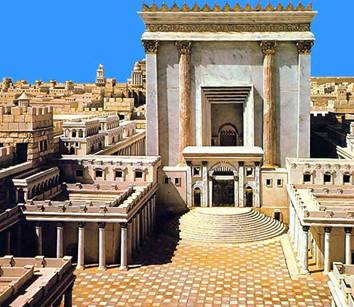
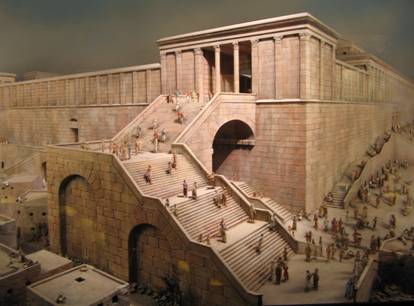
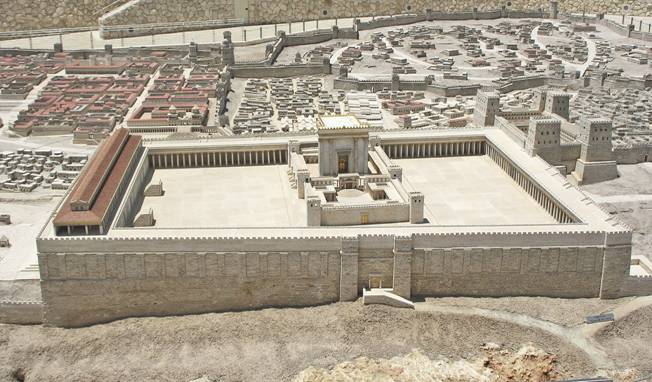
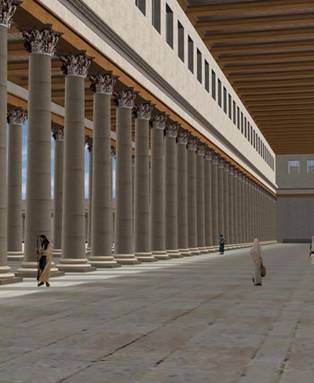
Do the above images look familiar? They should. Jews have been replicating this hideous, block structure since the destruction of this original edifice of their wealth and power.


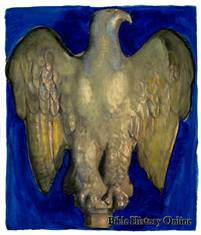

It’s no coincidence that this ugly, black symbol resembles a vulture. So what might be the significance of the second Temple and this imagery from the goyim perspective?
“The Jewish Lobby never thought Trump had a chance of winning and was banking, pun intended, on Hillary to win and continue with business as usual.”
Really? So why are Israeli Jews slapping each other on the back over Trump’s win? Might it be because Trump has demonstrated his total allegiance to them by giving his full support to making Jerusalem the capital city of Israel, thus putting the last nail in the coffin of the Palestinian state and propelling the world to within a hairsbreadth of John Hagee’s joyous Armageddon?
Jews are big on fulfilling their holy book’s prophecies – really big. Few realize at this point that Trump’s actions have now given the green light for the go ahead to build the third Temple. This will entail the destruction of the Muslim Mosque on the Dome of the Rock, a primary symbol of holiness for Islam.
For Jews this destruction and then rebuilding of their own temple Temple will provide the visible symbol they have won, they now have full global domination, the world belongs to the Jews.
According to their book, this Temple and the reinstated sacrificial system, brought to an end by Jesus in the first century, will signal their final triumph over the hated goyim. For idiot Christians, this will provide a clear indication the end of their world has drawn neigh.
Accordingly, the scriptures will now be fulfilled with a final battle before (or after, depending on the version) which their savior will come down from heaven to deliver them up to a place filled, not with trees, grass and blue skies, but gold and pearls.
It’s Christmas Day, the traditional Christmas celebration of the birth of Jesus, so I would like to make a comment concerning this unusual individual – Jesus, what a guy.
The following story was related personally to me by Jesus over a brew at a local bar. We had worked together on a construction site, and with his limpid brown eyes, dark curly hair and complexion I thought he was Mexican. However, he would not touch a jalapeño, saying they were an abomination to his palate and when I heard his story, I finally realized it was more likely this Jesus was a Palestinian.
Here was a young man who knowingly and willingly gave up his life to help his fellow man. What could possibly be more noble? What higher form of altruism is there than to give ones life for an unknown neighbor?
Jesus said he came for the “lost sheep of Israel”, the lost sheep who blindly followed the Temple’s onerous decrees for continual sacrifice to atone their sins. The Temple kohanim, or priests, were living off the “fat of the land.” It was written that “a man worked one day to pay his rent, one day to feed his family, and one day to pay his taxes (to Rome), the rest went to the Temple.” Since there were only six days in the productive week, this meant that half a Jew’s productive effort went to paying tribute to the Temple. Let us now reflect on the words of the great teacher himself. “The scribes and the Pharisees sit in Moses' seat. All therefore whatsoever they bid you observe, that observe and do; but do not ye after their works: for they say, and do not. For they bind heavy burdens and grievous to be borne, and lay them on men's shoulders; but they themselves will not move them with one of their fingers. But all their works they do for to be seen of men: they make broad their phylacteries, and enlarge the borders of their garments, And love the uppermost rooms at feasts, and the chief seats in the synagogues.
“But woe unto you, scribes and Pharisees, hypocrites! for ye shut up the kingdom of heaven against men: for ye neither go in yourselves, neither suffer ye them that are entering to go in. Woe unto you, scribes and Pharisees, hypocrites! for ye devour widows' houses, and for a pretence make long prayer: therefore ye shall receive the greater damnation. Woe unto you, scribes and Pharisees, hypocrites! for ye compass sea and land to make one proselyte, and when he is made, ye make him twofold more the child of hell than yourselves. Woe unto you, ye blind guides, which say, Whosoever shall swear by the temple, it is nothing; but whosoever shall swear by the gold of the temple, he is a debtor!
“Ye fools and blind: for whether is greater, the gold, or the temple that sanctifieth the gold? Whosoever shall swear by the altar, it is nothing; but whosoever sweareth by the gift that is upon it, he is guilty. Ye fools and blind: for whether is greater, the gift, or the altar that sanctifieth the gift? Whoso therefore shall swear by the altar, sweareth by it, and by all things thereon. And whoso shall swear by the temple, sweareth by it, and by him that dwelleth therein. And he that shall swear by heaven, sweareth by the throne of God, and by him that sitteth thereon.
“Woe unto you, scribes and Pharisees, hypocrites! for ye pay tithe of mint and anise and cummin, and have omitted the weightier matters of the law, judgment, mercy, and faith: these ought ye to have done, and not to leave the other undone. Ye blind guides, which strain at a gnat, and swallow a camel. Woe unto you, scribes and Pharisees, hypocrites! for ye make clean the outside of the cup and of the platter, but within they are full of extortion and excess. Thou blind Pharisee, cleanse first that which is within the cup and platter, that the outside of them may be clean also.
Woe unto you, scribes and Pharisees, hypocrites! for ye are like unto whited sepulchers, which indeed appear beautiful outward, but are within full of dead men's bones, and of all uncleanness. Even so ye also outwardly appear righteous unto men, but within ye are full of hypocrisy and iniquity. Woe unto you, scribes and Pharisees, hypocrites! because ye build the tombs of the prophets, and garnish the sepulchers of the righteous, And say, If we had been in the days of our fathers, we would not have been partakers with them in the blood of the prophets. Wherefore ye be witnesses unto yourselves, that ye are the children of them which killed the prophets.
“Fill ye up then the measure of your fathers. Ye serpents, ye generation of vipers, how can ye escape the damnation of hell? Wherefore, behold, I send unto you prophets, and wise men, and scribes: and some of them ye shall kill and crucify; and some of them shall ye scourge in your synagogues, and persecute them from city to city: That upon you may come all the righteous blood shed upon the earth, from the blood of righteous Abel unto the blood of Zacharias son of Barachias, whom ye slew between the temple and the altar.
“Verily I say unto you, All these things shall come upon this generation. O Jerusalem, Jerusalem, thou that killest the prophets, and stonest them which are sent unto thee, how often would I have gathered thy children together, even as a hen gathereth her chickens under her wings, and ye would not! Behold, your house is left unto you desolate. For I say unto you, Ye shall not see me henceforth, till ye shall say, Blessed is he that cometh in the name of the Lord.”
Imagine Donald Trump addressing the subject of government in this manner.
However, Jesus was more than just a demagogue with a bad comb-over, he was the culmination of a movement; a great conspiracy to undermine the Temple and its sacrificial system. Jesus was a product of the collective effort by Essene mystics, born and bred by them for the specific purpose of bringing down the system described in Matthew 23. Jesus knew his fate long before the Sanhedrin decreed their sentence upon him. A burden so great, Jesus literally sweated blood over the coming debacle.
Jesus well knew the murderous proclivities of elite Jews and their Temple. He knew the horrible, torturous, punishments meted out to those who went against the Temple system. He knew he was doomed from the very beginning. Yet he continued on, saying to his most trusted confidant Judas, “Hurry, go quickly, lest I lose my resolve.”
And so Judas hurried off to the Kohein Gadol, Caiaphas, to report the whereabouts of the rebel who had snubbed and rebuked Temple law at every turn before finally attacking their source of revenue directly, within the Temple’s own walls. Earlier, at the beginning of his ministry, Jesus used his knowledge of the law to perform a clever trick in blessing wine without demanding the traditional tribute for priestly service. He had the best, but unblessed, wine poured into ceremonially pure receptacles, thereby ritually purifying the wine and negating the need for a paid blessing – “but the servants knew.”
Later, he reversed the Temple’s official decree of death that could well invoke the terribly expensive “para aduma” purification ceremony, so expensive that even rich Jews balked at the notion of risking touching, or even being in the presence, of a beloved child approaching death.
Thus, it came to pass the Essene had Jesus set up a public demonstration to rebuke the Temple’s decree of death for one known as “Lazarus”. By raising Lazarus from the sepulcher, a place where a body could be laid to rest in relative comfort before quietly passing over, Jesus made a clear statement: “Lazarus is not yet dead, he is merely another victim of the Temple that has improperly declared him dead.
Like the un-blessed purification of the wine and the raising of Lazarus, all the “miracles” attributed to Jesus concerned Temple law. Healing was not considered a miracle any more than it is considered so today and walking on water was a neat trick, but no miracle. Why? Because by Temple standards, the definition of a miracle was “an unintentional outcome to the law”. As alcohol is taxed today, wine in ancient Judea was intended to be ritually purified with a paid blessing. Therefore, when Jesus ritually purified the wedding wine without a paid blessing it was a miracle of the worst kind, one that deprived the Temple of its income.
Once a decree of death was made by a Temple priest, it was never intended that another Temple priest would come along and reverse the decision making a clear point that the individual was not actually dead, thereby voiding the possibility of invoking the required, onerous purification process known as the “Para Aduma”. It was a truly a miracle that Jesus could once again deprive the temple of its potential revenue. It was truly a miracle anyone would actually be courageous enough to go against the Temple authorities.
But how did Jesus do this, how did he gain the authority to reverse Temple law and teach against its principals? Jesus was born in the northern village of bet laham literally “house of bread”. Known today as “Bethlehem”, the village was just a stones throw from a monastery administered by an Essene sect known as the Nazarenes. A large lake, known as “Gennesaret” was not far away, so many of the early stories about Jesus are centered around this region which would be referred to by Jews as “Galil” or by Christians as “Galilee.”
Here the Essene took a young girl into their monastery. She was a pretty maiden, chosen specifically for her intelligence and more importantly her bloodline. The girl’s name was “Mary” and she would be groomed by the Essene mystics to entice a Temple priest into a marriage contract.
Prior to the birth of Jesus, and up to its demise, the Temple in Jerusalem was THE biggest public works project of its day, attracting skilled workers from around the region. However, there was a problem for the prospective laborer or artisan, one had to be priest to enter many of the areas of the Temple, therefore one had to be both a priest and an artisan or laborer to sign on with the highest paying employer in all Judea. Such was the lot of Joseph, a young priest trained by the Temple as a carpenter or perhaps a stonemason.
Not many years after his birth, Jesus was delivered to the Nazarene monastery by his parents where he was trained in Temple law and customs. Bright lad that he was, Jesus took to arguing legal minutiae like a duck ~ er ~ priest to water. By the age of thirteen, Jesus had already mastered the law and so when he was taken to the Temple for his bar mitzvah, a legal condition for entry into adulthood where one could now own property and make contracts, he amazed the Temple authorities with his expansive knowledge of their laws and customs. Since Jewish females of that era were chattel, owned by their husbands, they had no need for such ceremony. To become a priest and wield the Temple’s legal authority, one had to be born into the priesthood’s bloodline. The paring of a young priest with a woman of Mary’s bloodline made their male offspring an indisputable candidate for the priesthood. All it would take was a priest to perform the initiation ceremony and three priestly witnesses to the event. But what priest would possibly risk the wrath of his fellow priests for secretly inducting a potential rebel into the Temple authority? It would take a rebel priest to perform the ceremony and such a priest was found in the person of Jesus’ cousin John, a man of the same priestly linage.
From the beginning, cousin John was a different kind of priest, one who rejected the Temple’s sacrifice and its burdensome laws. This is made abundantly clear in the description of his dress. Everything about John, from his dress to his diet fell outside sacrificial law. But most of all, his ritual immersion ceremony, a new form of Mikveh, later referred to as the “baptism,” ran fully against the sacrificial system he eschewed. Like the sacrifice itself, the Mikveh was a regularly occurring, cyclical ceremony that purified and relieved one of certain sins. In contrast, John’s new immersion ceremony was a one-time affair. Once dunked, forever blessed and forgiven. “Such a deal for you my friend,” John would say. And so three Temple priests just happened to visit John to see what he was up to on the very day he immersed the young initiate Jesus into the Temple priesthood. Voila! Witness problem solved. Sounds like a plan? It was a plan, a conspiratorial plan against the Temple. From that point on, Jesus was truly a man on a mission, a mission to become the Temple’s final blood sacrifice in the form of the paschal lamb, “the lamb of God.” It would undoubtedly be a horribly painful and bloody death, yet necessary if the Temple was to be brought low.
Naturally, the first thing Temple opposition tried was to threaten or buy off Jesus. To achieve that end a priest was sent to find Jesus as he meditated and prepared spiritually for his mission. His opposition, referred to as “Satan” which literally means “opposition”, did his best to bully and mock Jesus’ absurd notion of going against the immense power of the priesthood.
“Why it would be easier to turn these stones into bread”, mocked the priest.
Taking Jesus to the top of the Temple he tried bullying him again, “If you think you have a chance, then throw yourself off these ramparts. See how you fare without the Temple’s support beneath you.”
Finally, gesturing out over the ramparts of the massive structure built on the massive plateau of a decapitated mountain, the priest offered his final temptation: “Jesus, look at the world below” and in fact the ‘world’ to the elite Jewish kohanim was Jerusalem. “All this can be yours Jesus, all you need do is throw your lot in with the Temple brotherhood and all our power, all our wealth, and all the women can be yours to do with as you please. We are the elite brotherhood of the circumcised and you are one of us. Come, bend your knee to YHVH, Jesus! Worship our god and our Temple and all you see below will be yours!” Unmoved by the generous offer, Jesus spat out his reply, “Get thee behind me Satan” (the Aramaic equivalent of “kiss my tuchas.”)
And so in rebuking the priests’ offer, the stage was set for the rest of a story that would move quickly from that point on. Jesus now took every opportunity to tweak Temple noses, breaking or refuting legal principal after legal principal. Soon the priests became apoplectic with rage. Finally when Jesus reversed the Temple’s proclamation of death upon Lazarus the “kohein gadol” or high priest hissed “Kill them, kill them both.” But there was difficulty in executing the order. First, only a high Roman official could pronounce the sentence of death for the commission of a crime. More importantly however, this was an order to kill a priest, a member of their own brotherhood. No matter how rebellious, Jesus was now officially a member of the circumcised B’nai B’rith or “brotherhood of the cut”. It would not sit well with the rank and file kohanim to witness one of their members summarily executed without the due process demanded by their own Temple law. For a time the order went unfulfilled, but when Jesus rode through the Temple’s East Gate in the very manner described by the prophets of the coming Messiah, and went straight to the moneychanger’s tables to attack one of the Temple’s prime sources of revenue, it was too much, the rebel priest had to go. The Essene conspiracy was proceeding exactly as planned.
Now came a very delicate situation. Jesus had to be turned over for trial and the Essene had to be certain that he would get to trial without being murdered beforehand, something that happened all too often to people taken into custody by Temple guards. They also had to be careful not to alert the Sanhedrin of their intention by making his capture too easy.
The answer was to produce a traitor among the rebels who would turn Jesus in to Temple authorities. And so during the last supper with his disciples, Jesus leaned over to his most beloved friend and right-hand man, urging him to “go quickly” before he lost his resolve to carry the plan through to its painfully horrid conclusion.
Judas was appalled at the choice, but was the only one with the legal background and finesse to convince the naturally suspicious Sanhedrin that his intent was that of a true traitor, nothing more. And so, he hurried to the Temple where he had a guard summon the kohein gadol. Caiaphas in turn promptly summoned the Sanhedrin to witness and assess the traitor’s claims. Convinced, they paid Judas the thirty pieces of silver required by law to be paid to an informant; a law that assured the Temple a ready supply of spies and unofficial agents.
In utter despair over what he had done, Judas threw the money back at the presiding members and legend has it, went out and hung himself over the Hobson’s choice that was to be his fate. Judas was the best and brightest of all the disciples. No doubt, Jesus was greatly pained to have to assign his friend such a terrible task, but it was a necessary part of the plan. While the other rough, uneducated disciples remained ignorant of the plan, there can also be no doubt the urbane, former zealot known as Judas was well aware of how it was to play out in the overall scheme.
During his trial, Jesus danced around the Sanhedrin’s questions like a matador flashing his cape at an enraged bull. Finally, utterly exasperated, the kohein gadol Caiaphas shot a pointed question at Jesus’ “Do you claim to be the son of god, the new YHVH?”
To which Jesus replied with gimlet eye, “If you say that I am, so be it.”
Uplifted with victory, the Kohein Gadol shouted, “There he said it, he has openly admitted to the crime of claiming the title of YHVH!” Instantly the supporting members of the Sanhedrin began chanting, “Death! Death! Death! To the traitor! Death to the one claiming the title of our Temple’s God YHVH!”
Now Jesus would be turned over to the Roman procurator for final judgment, but this led to yet another problem.
It is not recorded what action had gotten Pilate assigned to Judea, but one can be assured it must have been a serious transgression indeed to get the worst assignment in the Roman Empire. Jews had long been noted for their rebellious nature; they would rise up in revolt at the drop of a Yarmulke. Thus, Roman officials in Judea had to tread very carefully, less they became embroiled in yet another rebellion that would disrupt the region’s commerce.
By that time, having established major road systems throughout the empire to facilitate the efficient movement of their commerce, Rome was all about the peaceful commerce that fed and supported the empire. Therefore, any such uprising would undoubtedly leave yet another major black mark on the presiding governor’s record.
All Pilate desired was to quietly serve out his term in the kind of place that later soldiers would typically refer to as “the asshole of the earth”. No doubt, a similar sobriquet would have been applied by Roman soldiers assigned to Judea. All Pilate wanted was to return “to the world”, his world, the Roman world, with no more black marks on his record so he might draw a better assignment within the empire, hopefully much closer to Rome. But now Pilate was being approached by these crazy Temple Jews with a request, nay a demand, to have one of their own sentenced to death under Roman law. Worse, this man whom they claim affronted their god had his own clannish group of followers who were reportedly as zealous as their opposition. It was the prefect setup for the very rebellion that Pilate wished to avoid. This however was an argument between opposing religious factions and there were many such arguments among many different religious factions throughout the region. As such arguments had nothing to do with Rome or its laws, Pilate attempted what is now referred to as a “work around” solution. First, he personally interviewed Jesus, but found nothing illegal or even scathing about his claims or his words.
Even though Pilate could find no fault with Jesus, the Temple priests pressed ever harder for the death penalty. Now Pilate tried another ruse, he would let the people decide Jesus’ guilt. Thus Pilate had a known thief and murderer brought out for sentencing as an alternative choice to Jesus. Figuring the choice between a known criminal versus an innocent man would be a forgone conclusion, Pilate had not counted on the Temple’s agent provocateurs stationed among the crowd who began chanting “Jesus!” “Jesus!” We want Jesus! Death to Jesus!
Now the people had spoken, so Pilate took one last trick from his bag hoping it would satisfy all parties involved – Scourging. He would have Jesus whipped to a bloody pulp, but not executed. Now the Sanhedrin would be satisfied with the sentence and Jesus’ followers would still have their leader.
However, this too was not to be as once again the Temple authorities demanded execution. Finally, in utter exasperation, Pilate complied with the Sanhedrin’s wishes, no doubt crossing his fingers the execution would not lead to yet another violent Jewish revolt. To show his exasperation and disgust of the matter, Pilate ceremoniously washed his hands of the entire proceedings. He had had quite enough of the Jews’ religious lunacy. At that time, it was typical of the crucified victim to be tied to the cross. Nails were expensive, hard to replace and unnecessary for the process to achieve its gruesome goal. In fact to date, there is only one verified archaeological example of a crucifixion carried out with nails, but to achieve the Essene’s ultimate goal, Jesus had to be a blood sacrifice.
Therefore an Essene priest, posing as a temple authority, approached Pilate with the demand that Jesus be nailed to the cross. No doubt by this point Pilate was fully steamed with exasperation. His reply must have been something on the order of, “Whatever, I’ll have Jesus nailed to the moon if you will go away and leave me alone!” And so it was ordained, Jesus was to be goaded to the Mount of Olives where three crosses were positioned facing the East Gate, the very place where Jesus had prophetically ridden a donkey though on his way to attack the moneychangers. In their vindictive rage, the Temple priests wanted Jesus’ last vision to be that of the grand Temple structure he so wantonly attacked, never realizing that the final blood sacrifice of a paschal lamb was about to be committed to their God on their most sacred day of thanks.
“The sacrificial service took place in the courtyard of the Temple at Jerusalem. The blood was collected by a priest, and rows of priests with gold or silver cups in their hands stood in line from the Temple court to the altar, where the blood was sprinkled. These cups were rounded on the bottom, so that they could not be set down; for in that case the blood might coagulate. The priest who caught the blood as it dropped from the animal then handed the cup to the priest next to him, receiving from him an empty one, and the full cup was passed along the line until it reached the last priest, who sprinkled its contents on the altar. The lamb was then hung upon special hooks or sticks and skinned; but if the eve of the Passover fell on a Sabbath, the skin was removed down to the breast only. The abdomen was then cut open, and the fatty portions intended for the altar were taken out, placed in a vessel, salted, and offered by the priest on the altar, while the remaining entrails likewise were taken out and cleansed.”
Thus, it came to pass that a man named Jesus gave his life to deliver his people from the criminally onerous financial clutches of the Temple’s kohanim. By law, a blood sacrifice is void unless the animal or victim dies, therefore if the animal or victim remains alive, the sacrifice cannot and will not be honored by god. This presents a legal conundrum wherein the process is put on hold until the sacrifice is complete.
Jesus’ life was most likely preserved by the Essene, known masters of healing. When Jesus “rose from the dead” he presented an even greater legal miracle than that of Lazarus. As planned by the Essene mystics, the return of the sacrificial paschal lamb from the sepulcher threw the entire Temple system into a religious and legal quandry, slowly spinning downward until the final chapter of the Essene conspiracy, pitting the Jews’ Temple authorities directly against the Romans.
No doubt, Temple sacrifice went on as before, but now it was different. Jesus had raised serious questions that gave rise to doubt among the Temple’s followers from which the Temple and its sacrificial system would never recover. However, it was yet another revolt that spelled the end of the Temple in 70 AD. Thus, the mission Jesus had begun by refuting Temple law and pointing out the fallacies of its customs, was finally accomplished.
The mission Jesus had been born and trained for, that of delivering his people, the lost sheep of Israel from their sins, was finished. The blood sacrifice of Jesus had fully absolved the sins of the Jews for the last time, delivering them from the bloody financial clutches of the Temple Priests and their sacrificial system.
Those who sat in Moses' patriarchal seat and bound their followers with heavy burdens, grievous to be borne, laying them on men's shoulders; while they themselves moved not one of their fingers. Those whose works only served to aggrandize their position of authority. Those hypocrites who made broad their phylacteries and enlarged the borders of their garments in a show of ostentatious grandeur, who loved the uppermost rooms at feasts and the chief seats in the synagogues all the while devouring widows' houses. Those who made piously long prayers to absolve themselves from their criminal actions were finally eliminated with the destruction of the Second Temple and its sacrificial system.
Jesus finished his beer and walking out the door, turned to say: “Jews, my God! Will they never cease their bloody depredation upon the innocent? I hope someone else is willing to step up for crucifixion this time around. As for me, I’m off to see the latest Star Wars movie.”
Jesus – what a guy.
[ Back to top of this page ]

Blood - It’s all about blood, sacrificial blood, the blood of the lamb, the blood of racial purity, the Bible is bathed in blood. We will begin this study by examining the foundation of the system that produced the authors who wrote the Bible. A few may consider some of the points I cover to be controversial. For those finding themselves perturbed by such controversy I ask them to consider their reaction were these very same references made in relation to Christians or Muslims. The fact is there is no difference; such differences only exist in the minds of those choosing to make exception.

Blood bath scene from the movie Everything is Iluminated
Long before the Temple came the era of the Tabernacle, where the sacrifice was ceremonial bloodlust. It was a place where priests butchered animals to atone for sins against their God, YHVH. The sacrificial system was based on continual atonement for the original sin from which one could never be fully absolved.
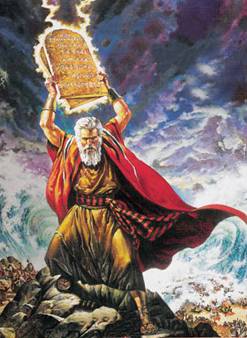
The Torah originally referred to the first five books of the Old Testament. The books of Genesis, Exodus, Leviticus, Deuteronomy and Numbers are stories of the Levirate laws forming the basis for ancient Judaism’s sacrificial system. The foundational principal behind the system is found in Leviticus chapter seventeen verse eleven which states: “For the life of the flesh is in the blood and I have given it to you upon the alter to make a atonement for your soul, for it is the blood than maketh atonement for the soul.”
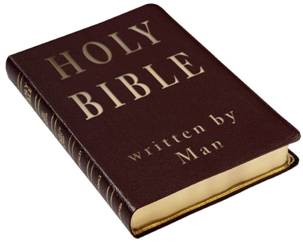
This principal is again readily apparent in the description of the original Ten Commandments being smashed by Moses before being replaced by "God" in the form of the second Decalogue, a set of commandments pertaining to sacrificial minutiae. Like many primitive cultures, ancient Judaism was naturally founded on the sacrifice of blood offerings, in the form of specified animals, and non-blood offerings in the form of specified grains.
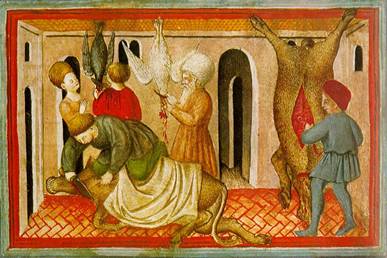

It is notable that fish were outside the sacrificial system. In the earliest days before the Temple, the Tabernacle was a moving slaughterhouse, a place where priests butchered animals. It is telling that only the best animals, the least “blemished”, could be offered for sacrifice in this circus of slaughter.

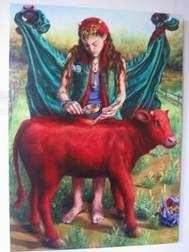
The indication as to the true purpose of the sacrificial system lay in the fact that the priests took ten percent of the choicest cuts of meat for themselves while burning only the fat and viscera upon the altar as “sweet savor” to the Lord. The remaining meat was then returned to the sinner. Think about this for a moment, God prefers the entrails to the prime cuts commanded by the priests.

Ten percent of the choice cuts for the Priests
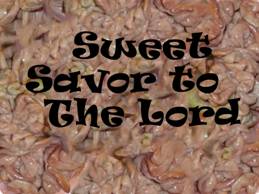
Fat and viscera sacrificed to the Lord
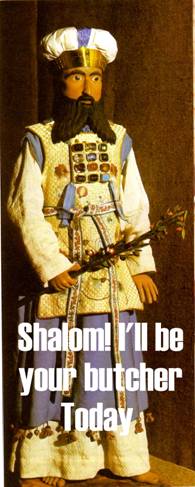
Imagine for a moment, your priest as a butcher. Imagine going to church on Sunday and seeing your priest, pastor or reverend at the alter slitting the throat of various parishioners pets, catching their blood in a golden bowl and then splashing it around the alter as he dances around in a trance-like state chanting pleas to God for the forgiveness of sins while begging for salvation. After the service, you might say to your spouse, “Boy that certainly was a different sermon this week wasn’t it dear?” Your spouse replies, “Oh I don’t know, next week is communion, that’s when we eat the body of Christ and drink his blood.”
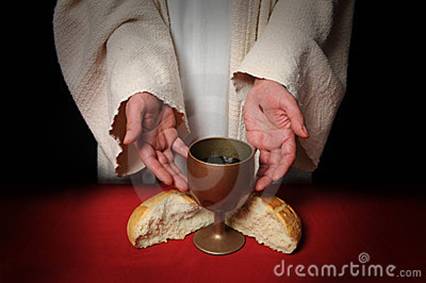
After making their sacrifice, the sinner was marked with blood, mixed with other bodily fluids, like semen, to assure adhesion, on either the forehead or the big toe. This mixture also ensured longevity of the mark. The blood marking was visible proof that a tribesman had paid his “sin tax”. Later, this mark was washed off in a ritual purification bath called the Mikveh, at which time the sacrificial cycle began anew.

Blood marking scene from the movie The Ninth Gate
This marking system however had one obvious, glaring drawback. Blood is a commonly available substance produced by all the higher organisms. In their attempt to control the easily counterfeited blood marking, priests forbade their followers from butchering their own animals or even possessing the instruments for doing so. This was the primary reason for the kosher slaughter, a process where the living animal’s throat is slit to ensure the pumping heart drains the blood as completely as possible. This also led to the prohibition of various implements and practices used in the butchering process. Thus the priests defined knives and other implements used for butchering as “clean” or “unclean”, but think “legal” or “illegal”, as these are in fact legalistic dictates that have nothing to do with hygiene.
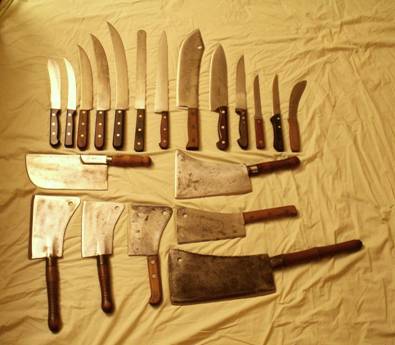
Any contact with blood was strictly prohibited, like that produced by menstruating women or “lepers”, which to these ancient people meant anyone with running sores. As a result, a byzantine legal structure arose to control the minutiae of everyday life. There is a forgettable tract in the Mishna that elaborates at length on the cleanliness of a bowl. The upshot of this legal commandment is that if a bowl in intact, then it is unclean; but if the bowl is smashed into pieces of which the largest piece is no larger than the tip of a man’s little finger, then it is clean. This makes absolutely no sense unless one understands the bowl in question can be used to hold and mix blood products.
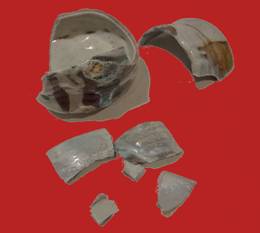
Eventually the phylactery replaced the blood marking. The “Tefillin” is a small box attached to the forehead or the back of the wrist holding a scroll with a passage from the Torah. The scroll changed in accordance with the sacrificial cycle; and, like tabs on a license plate, it could be checked as proof that Temple followers were current on their sacrificial tribute. Despite this updated modification, laws concerning the prohibition of blood products remained in full force.


Close your eyes for a moment and imagine yourself as a very young child of a primitive, nomadic, tribesman. Having heard only stories, you are dimly aware of the importance of a much talked about, upcoming ritual. You are aware this ritual occurs on a regular basis and the anxiousness of your parents is palpable when discussing the subject.

On the prescribed day, preparation for the ritual begins. You follow your parents down to a running stream. A man richly attired in strange garb stands in the middle of the stream. One by one, your neighbors walk into the stream where the man mutters strange words as he immerses them in the water while rubbing their forehead with the palm of his hand. After your father has undergone the ritual immersion, you note the red mark he always wears on his forehead has disappeared. The ritual continues until every adult in the village has undergone immersion. You hear someone nearby whispering that the sacred cycle has ended.
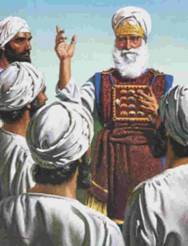
The following day, your mother wakes you earlier than usual and your family spends the morning in careful preparation for the day's activities. You want to play with your friends, but your mother insists you attend to her demands. Later that afternoon, you accompany your father as he goes out among his meager collection of animals. He spends quite a bit of time inspecting the herd until he finally chooses a prized sheep. This animal happens to be one of your favorites. You have often played with the sheep, chasing them around the meadows and finally catching one, you buried your face in its soft wool. Your nose takes delight in the earthy smell of the sheep. It is the smell of life and life seems to be everywhere among the hills where the herds roam.
The next morning, your father takes you by the hand and with animal in tow, you are dragged to the portable slaughterhouse your parents refer to as the “Tabernacle.” Here you are to witness the important ritual they have been discussing over the preceding weeks. You enter a large enclosure surrounded by a fence made of cloth. In the middle of the enclosure is an odd tent-like structure with rude wooden columns and entry doors. A number of well attired men await in the makeshift courtyard directly in front of the tent. Soon, other families begin arriving with their animals.
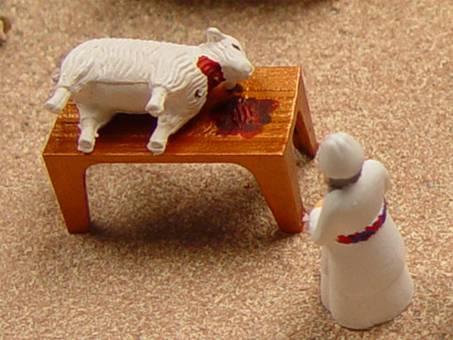
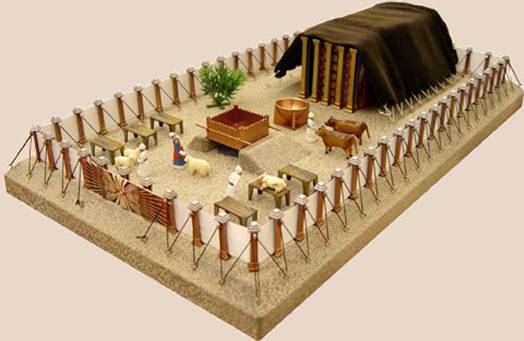
Finally, the ceremony begins. A priest blows a ram’s horn and calls out for sinners. A neighbor of yours steps forward and presents a prized calf to one of several strangely dressed men, like the men you saw at the stream the day before. Your parents refer to these men as "priest". One by one, the sinners step forward and present their animal to a priest who then wrestles it to the ground. Your neighbor drops to his knees in front of the priest, who closes his eyes and begins chanting something unintelligible. As you witness this strange act, your father grabs your hand and places it alongside his on his prized sheep. You feel its heart racing; the animal's terror is clearly transmitted though the palm of your hand. The priest takes hold of the struggling animal and with quick, practiced motion, slits its throat with a razor sharp knife. The animal struggles, kicking and bellowing in protest, as geysers of blood erupts from its jugular vein. A froth of blood spews forth, splattering you and everyone present. You feel the spark of life draining through its hide as the stillness of death overcomes the animal. You look down at the viscous red fluid splattered on the front of your robe. You stare with revulsion at the red stains soaking into the fibers as the stench of death assaults your nostrils and addles your senses.
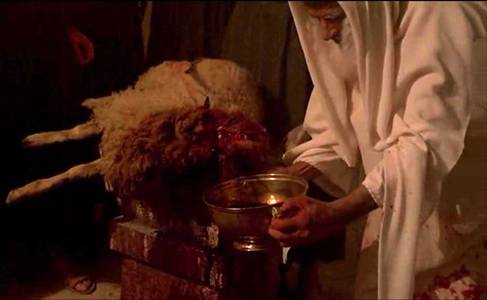
Even before the animal has ceased struggling, you look up from your bloodstained robe to see the head priest/butcher moving quickly to catch the animal’s blood in a golden bowl. With eyelids half closed and muttering some strange incantation, he seems to be in a trance. Shouting, he lifts the golden bowl skyward at arms length before splashing the rapidly congealing blood over and around the base of the flaming altar. The priest then comes out of his trance and begins eviscerating the animal. During this process, the animal’s bloody guts are thrown upon the altar, where they are incinerated as sweet savor to a god that evidently has an abiding taste for burnt fat and viscera.
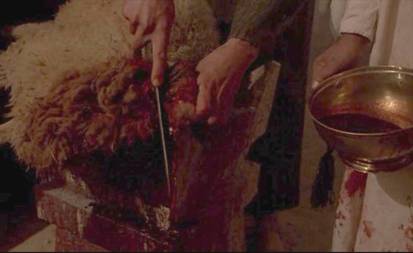
In just a few strokes, the priest/butcher finishes his gory task. Working rapidly, he begins cutting the animal’s joints. As he separates the portions of meat, he carefully lays aside a large portion of the best cuts for himself. He then returns the remaining meat to the sinner, who by now has given the priest full admission of his sins.
With the sacrifice complete, the priest produces a golden bowl with a cupful of the animal’s blood swimming in the bottom. He mixes it with another bodily fluid that smells like semen. He uses his fingers to smear a large daub of the mixture on the forehead of the entranced, chanting sinner kneeling before him with closed eyes. Then, with a loud shout, the priest/butcher declares that by this act, all sins have been atoned. Your neighbor staggers to his feet and like a beatific drunk, lurches away from the gory remains of what had been a living, breathing creature moments before. Eviscerated animal remnants swim in a pool of blood that is rapidly absorbing into the dirt, even as the priest calls for the next sinner to step forward with his animal.
Suddenly you feel the full emotional horror of the fate awaiting the other animals brought to the ritual. All the while, these men called priest, howl, chant and dance about, reciting their ritualistic incantations that beg god’s forgiveness; it was an extremely gruesome spectacle. The bloodlust continues well into evening.
What you never witness is the secret ceremony that takes place inside the Tabernacle’s tent where the high priest, in a final act of crazed bloodlust, drinks sacrificial blood before the mercy seat. The Levirate injunction against consuming blood is a public admonishment to restrict the use of blood. However, the priests, called kohanim, exempted themselves from their own laws. They secretly do not observe such restrictions placed on their followers. This covert act, along with the acceptable act of consuming sacrificial meat, will later be replayed during the last supper when Jesus, the sacrificial paschal lamb, tells his disciples: “Whosoever eats my flesh and drinks my blood will have eternal life. Take this bread, this is my body, drink this wine this is my blood. Do this in remembrance of my ultimate sacrifice to the Temple.”
A few days later the priests fold their Tabernacle tent, their circus of horror, and move on. They will move to the next tribe where the sacrificial cycle will be played out once again.
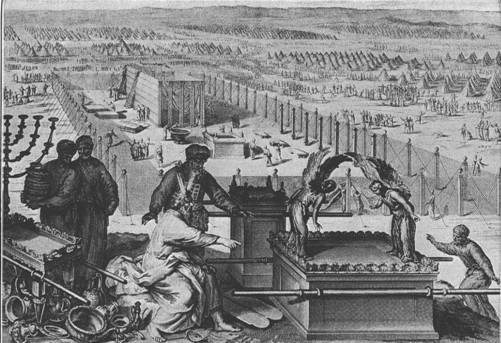
Consider the effect of this gruesome spectacle on a young child. Blood spewing everywhere, chanting priests mesmerized in their crazed bloodlust, driven by the howling and grunting of animals bleeding out the last of their life on the ground. The restless bleating of animals, now aware of their terrible fate. Sinners raising their hands towards the heavens as they cry out for god’s mercy and forgiveness.

Imagine your parents continually consumed with the thought of blood and the avoidance of the sticky substance, thoughts that translate into an unnatural obsession about the stuff. Extrapolate this horror out over the generational millennium and one finds a race founded on culturally inbred, psychopathic, bloodlust; a lust they can neither alter or escape.
 A top Judaic Communist official named Zinoviev stated: "Without mercy, without sparing, we will kill our enemies in scores of hundreds. Let them be thousands; let them drown themselves in their own blood. For the blood of Lenin and Uritzky, Zinoviev and Vólodarsky, let there be floods of the blood of the bourgeoisie--more blood! As much as possible!" (Krasnaya Gazeta, Sept. 1, 1918).
A top Judaic Communist official named Zinoviev stated: "Without mercy, without sparing, we will kill our enemies in scores of hundreds. Let them be thousands; let them drown themselves in their own blood. For the blood of Lenin and Uritzky, Zinoviev and Vólodarsky, let there be floods of the blood of the bourgeoisie--more blood! As much as possible!" (Krasnaya Gazeta, Sept. 1, 1918).Does the quote from Zinoviev sound Biblical? The millennia of practicing the blood sacrifice permeated the very core of Judaism until it became a genetic component of their race.
“Maybe you've checked out the various religions and maybe you've dabbled in some, but perhaps you're not satisfied with what you've found. Wonder why? It may be because most of them aren't right for you. They don't take into account your DNA Code. Most religions, and especially the major ones, aren't the products of people like you, if you are White. They're a bad fit for the way you are, and the way you are is largely determined by the DNA Code you were born with.” - H. Millard

Isn’t it about time humanity moves beyond religious death cults focused on blood and sacrifice?
[ Back to top of this page ]
[Another Contibutor]
The problem with PEOPLE is that they do not understand, that much more than the Old Testament and Judaism stands behind New Testament and Christianity. Old Testament consists of 39 books, of which only about 12 are quoted in the New Testament. Of that number some are quoted multiple times, others only once. There are also fake “quotes” from OT, which is clear if one follows and checks them all. There is a lot of “Paganism” of Hellenic or Persian origin in the NT, including a God-Human born of a Virgin, “12 apostles” and typical Greek miracles. Even the parable of poor Lazarus and rich man is Greek in its origin. But most people do not understand it, so brainwashed they are by their “theology” or “Sunday schools”…
The problem with Christianity is that people do not understand the Jewish mind behind it. To understand the New Testament, one must understand Jewish culture, history and religion. Of course the Jews make no effort to enlighten the ignorant goyim on these subjects. In fact they prohibit the transference of their religious texts under penalty of death!
Long before the Temple came the era of the Tabernacle, where the sacrifice was ceremonial bloodlust. It was a place where priests butchered animals to atone for sins against their God, Yahweh.
The Torah originally referred to the first five books of the Old Testament. The books of Leviticus and Deuteronomy are Levirate laws forming the basis for Judaism’s sacrificial system. This system is naturally founded on the sacrifice of both blood offerings, in the form of specified animals, and non-blood offerings in the form of specified grains. In the early days of the sacrificial system, the Tabernacle was nothing more than a moving slaughterhouse, a place where priests butchered animals. It is telling that only the best animals, the least “blemished,” could be offered for sacrifice.
The indication as to the true purpose of the sacrificial system lay in the fact that priests took ten percent of the choicest cuts of meat for themselves and burned only the fat and viscera upon the altar as “sweet savor” to the Lord. The remaining meat was then returned to the sinner. Think about this for a moment, the Lord preferred fat and viscera to the prime cuts commanded by the priests.
By this logic, what harm is there in doing away with the Kosher tax? Since it’s “virtually non-existent,” who would miss it? Then again, if the Kosher “blessing” is so important to Jews, maybe the Rabbis could perform the service free of charge,like Jesus did during the Second Temple period.
The Kosher tax is the same scam leveled on the ancient Judaens by the Temple priests. Almost everything had to be blessed, for a price of course. Fish were outside the sacrificial system so there is a huge message when Jesus has the coin taken out of the fishes mouth to pay the tax. This tax is often portrayed as a payment of Roman taxes, but it was in fact a Jewish Temple tax.
Water into wine, raising the dead and the multiplying loaves (not fishes) were all religo/political acts rebuking Temple law. To ancient Hebrews, the idea of a “miracle” was an unintended outcome to the law. As the Temple was the recognized legal authority of the Jews, acts such as blessing food without tribute went directly against the laws that normally brought sacrificial tribute into the Temple. The presence of a priest, Yeshu (Jesus), at these events is what caused the problem. He resolved each one without exacting the necessary tribute required by the Temple. Water into wine was a slight of hand trick whereby Yeshu had the servants pour unblessed wine into sacred containers thereby automatically making the wine legally pure according to Levirate law. The same was true for the unblessed bread that was “multiplied.” The crowds had brought bread, but the bread lacked the necessary blessing by a priest, so it was “multiplied” from a few loaves of blessed bread. The fish were not included in this “miracle” as they lay outside the sacrificial system. The raising of Lazarus was a direct public refutation of the very expensive “Para Aduma,” required for purification after contact with a dead body. Lazarus was “not unto death,” he had been declared legally dead by a priest and buried alive so as not to risk the requirement to sacrifice the ashes of the “red heifer.” By raising Lazarus, Yeshu, a priest, legally reversed the official proclamation of death. This explains the kohanim reaction – “kill them both.” What made these unintended outcomes to the law possible was the fact that Yeshu was a priest who had been initiated into the priesthood by his cousin John at the Mikveh beyond the Jordan. As for walking on water, that reference may simply be a bit of mysticism thrown in for good measure by the Gospel’s authors.
Bet you can’t guess where the earliest precedence is found for this particular activity.
Well far be it for me to keep eager readers in suspense. This is exactly what the story of Abram is all about. Abram teams up with “God” to fleece Pharaoh and then Abimelech with his sister act. In this classic, mafia extortion scenario Abram and his wife Sarai serve as God’s bait.
Abram begins by telling a half truth, having Sarai tell the mark, Pharaoh, that she is Abram’s sister. Abram explains to Sarai the reason for this novel twist to criminal extortion is that if the evil, anti-Semitic, Egyptians find out Sarai is actually his wife, they will kill him. No doubt this was standard practice with ancient advanced civilizations, Walk into town with your wife and they instantly kill you. Oh yeah, standard practice. No stretching the ol’ line of credibility here.
The twist is that this is only a half lie as Sarai actually IS Abram’s sister, so its all good. “And he (Pharaoh) entreated Abram well for her sake: and he had sheep, and oxen, and he asses, and menservants, and maidservants, and she asses, and camels. One can only wonder where the he asses are in this story. Now here it comes – wait for it.
Next thing we find is Abram’s god strolling into the delta region to begin plaguing Pharaoh, for “sporting” with Abram’s wife. “And the Lord plagued Pharaoh and his house with great plagues because of Sarai Abram’s wife.” After all those camels and she asses and this is how god treats Pharaoh? There it is, the most classic of all Jewish maneuvers, the Stab-In-The-Back.
Of course Pharaoh is surprised at the accusation as he was under the impression that he was “sporting” with a sister not a wife. “What is this that thou hast done unto me? Why didst thou not tell me that she was thy wife?”
In any event, the god father obviously makes Pharaoh an offer he can’t refuse, so its no surprise to find the Egyptian ruler ponying up with a substantial portion of extortion loot. Here’s the epilogue: “And Abram went up out of Egypt, he, and his wife, and all that he had, and Lot with him, into the south. And Abram was very rich in cattle, in silver, and in gold [. . .] And Lot also, which went with Abram, had flocks, and herds, and tents.”
How many Jews walk into town starving and poor as a church mouse only to drive out with a brand new 2016BC she ass loaded with gold, silver and cattle in the trunk. One can only wonder if Abram had air shocks installed on the she ass before loading her up for the trip to Sodom.
In another story about the aftermath of a battle that appropriately takes place at night in slime pits, a character named Melchizedek, described as “King of Salem and priest of the Most High God”, comes swooping out of the mountains to fete Abram for his victory over King Bera of Sodom.
Melchizedek is an authority of some undetermined power, but as a priest of “the Most High God” he is undoubtedly the man behind the curtain pulling god’s levers that make flames shoot out at recalcitrant marks who refuse to pay their fair share.
Abram promptly splits 10% of his take of battle booty with Melchizedek. There is no reason given for such an extravagant gesture on Abram’s part, but you can pretty well bet who was the real brains behind the tactical intelligence of a nocturnal sneak attack on Bera’s beleaguered army and who’s doing the plaguing.
After defeating Bera, Abram craftily tells him he will not even take a shoe latchet from him – outside expenses of course. Abram thereby forms an alliance with a grateful King Bera. This is a political maneuver to strengthen Abram’s weak position in the region. Considering what god does to Sodom a few chapters later, fat lot of good Bera’s alliance with a Jew did him.
Note carefully, when god confronts the leader of a major military power like Egypt or Babel, he “plagues” or subverts the suckers instead of confronting them. However, when confronting a minor leader or weaker power, like Bera or Abimelech, god simply threatens the mark with instant death or just obliterates them outright. There’s a clue as to who god really is and what is behind his power.
There you have it, just replace “god” with Israel, or the central bank, substitute your favorite Jew criminal for Abram, have them form an alliance and you have one of the very first lesson’s in criminality from the Jew’s own Torah writ large in modern times.
[ Back to top of this page ]
I find it disquieting that people are refusing to recognize reality; instead, they want to believe. No doubt, this starvation scenario is a very real possibility, after all one can see the story played out in the earliest book of the Jews’ Torah in Genesis forty-seven.
That ye shall say, Thy servants' trade hath been about cattle from our youth even until now, both we, and also our fathers: that ye may dwell in the land of Goshen; for every shepherd is an abomination unto the Egyptians. (So why would quaint little shepherds be an abomination in Egypt?)
Manetho states: "during the reign of Tutimaos a blast of God smote us, and unexpectedly from the regions of the East, invaders of obscure race marched in confidence of victory against our land. By main force they easily seized it without striking a blow; and having overpowered the rulers of the land they then burned our cities ruthlessly, razed to the ground the temples of the gods, and treated all the natives with a cruel hostility, massacring some and leading into slavery the wives and children of others... Finally, they appointed as king one of their number whose name was Salitis. He had his seat in Memphis, levying tribute from upper Egypt.. In the Saite nome he founded a city.. and called it Auaris". He named these invaders the "Hyksos" which he translated as "shepherd kings" although now the term is often translated as "foreign rulers" or "desert princes".” Could this be the reason why Joseph told his brothers not to reveal they were shepherds? While there is no surprise to find Jews lying here, note the Egyptians called the Hyksos “Shepherd kings.” In the above description Jewish storytellers are desperately trying to distance themselves from their predatory ancestors by denying that “shepherd kings” is the proper translation
Then Joseph came and told Pharaoh, and said, My father and my brethren, and their flocks, and their herds, and all that they have, are come out of the land of Canaan; and, behold, they are in the land of Goshen. And he took some of his brethren, even five men, and presented them unto Pharaoh. And Pharaoh said unto his brethren, what is your occupation? And they said unto Pharaoh, Thy servants are shepherds, both we, and also our fathers.
[ . . . ]
And Joseph placed his father and his brethren, and gave them a possession in the land of Egypt, in the best of the land, in the land of Rameses, as Pharaoh had commanded. And Joseph nourished his father, and his brethren, and all his father's household, with bread, according to their families. (Ah yes, Jews eat well while the goyim starve in the streets just as they did in the Weimar Republic. Read the descriptions of fat, wealthy Jews in 1930’s Germany versus that of the starving goyim selling their children on the streets of Berlin to ~ Surprise! ~ fat, wealthy Jews.)
And there was no bread in all the land; for the famine was very sore, so that the land of Egypt and all the land of Canaan fainted by reason of the famine. And Joseph gathered up all the money that was found in the land of Egypt, and in the land of Canaan, for the corn which they bought: and Joseph brought the money into Pharaoh's house.
And when money failed in the land of Egypt, and in the land of Canaan, all the Egyptians came unto Joseph, and said, Give us bread: for why should we die in thy presence? for the money faileth. (One can only wonder what kind of Pharonic Central Banking System Joseph set up for Egypt that would allow its money to fail.)
And Joseph said, Give your cattle; and I will give you for your cattle, if money fail. And they brought their cattle unto Joseph: and Joseph gave them bread in exchange for horses, and for the flocks, and for the cattle of the herds, and for the asses: and he fed them with bread for all their cattle for that year.
When that year was ended, they came unto him the second year, and said unto him, We will not hide it from my lord, how that our money is spent; my lord also hath our herds of cattle; there is not ought left in the sight of my lord, but our bodies, and our lands: Wherefore shall we die before thine eyes, both we and our land? buy us and our land for bread, and we and our land will be servants unto Pharaoh: and give us seed, that we may live, and not die, that the land be not desolate.
(This is the Nhaadzee part of the story Jews love best)
And Joseph bought all the land of Egypt for Pharaoh; for the Egyptians sold every man his field, because the famine prevailed over them: so the land became Pharaoh's. (This is exactly what the Jews did in Weimar Germany. The cry went out from German Jews to their international brethren: “Come to Germany where you can buy a farm for a dollar!”) And as for the people, he removed them to cities from one end of the borders of Egypt even to the other end thereof. (This reference to “cities” is in fact the first known description of concentration camps.)
Only the land of the priests bought he not; for the priests had a portion assigned them of Pharaoh, and did eat their portion which Pharaoh gave them: wherefore they sold not their lands. (Here one finds the Egyptian priests were an elite class unto themselves. So what do we find Jews setting themselves up as in Jesus’ first century Judea? An elite priesthood! Jews have no creative imagination what so ever, they just steal their ideas from intelligent goyim.)
Then Joseph said unto the people, Behold, I have bought you this day and your land for Pharaoh: lo, here is seed for you, and ye shall sow the land. And it shall come to pass in the increase, that ye shall give the fifth part unto Pharaoh, and four parts shall be your own, for seed of the field, and for your food, and for them of your households, and for food for your little ones and it’z only gonna’ cost ya 20% of the gross!
And so the gullible Egyptians foolishly gushed, Thou hast saved our lives: let us find grace in the sight of my lord, and we will be Pharaoh's servants. And Joseph made it a law over the land of Egypt unto this day, that Pharaoh should have the fifth part, except the land of the priests only, which became not Pharaoh's.
Genesis 47 is the first Jewish teaching story that introduces mass starvation as a technique for controlling populations. From here came the Jews’ mass starvation of millions upon millions of people like the Russian Kulaks along with the eight million Ukrainians of Holodomor. Then there as well as the starvation of a million and a half German POWs in concentration camps - just like those camps Joseph set up for Egyptians.
By these examples, one can clearly see mass starvation is a standard operating procedure Jews use to cull and enslave the goy masses into submission. Masses Jews feel are either a threat or might provide potential service to them. However there is one small problem America is the Jews “Golden Honeycomb” if they bring America low into chaotic dissolution where are they gonna' go? This time there ain’t no place left to run but Israel. And that dear reader will soon become the target for tonight for the rest of the world. The Jews have painted themselves into a corner and we all know how cornered rats react.
[ Back to top of this page ]
Written by A Stanton, who is responsible for the entire content where indicated. Some images may be copyright; if so I'll remove them on request (or credit them). Unexpurgated in any way. Hosted on Rae West's site raetowest.org. The aim is to try to help people to understand the influence of Jews, both in the past and the present.